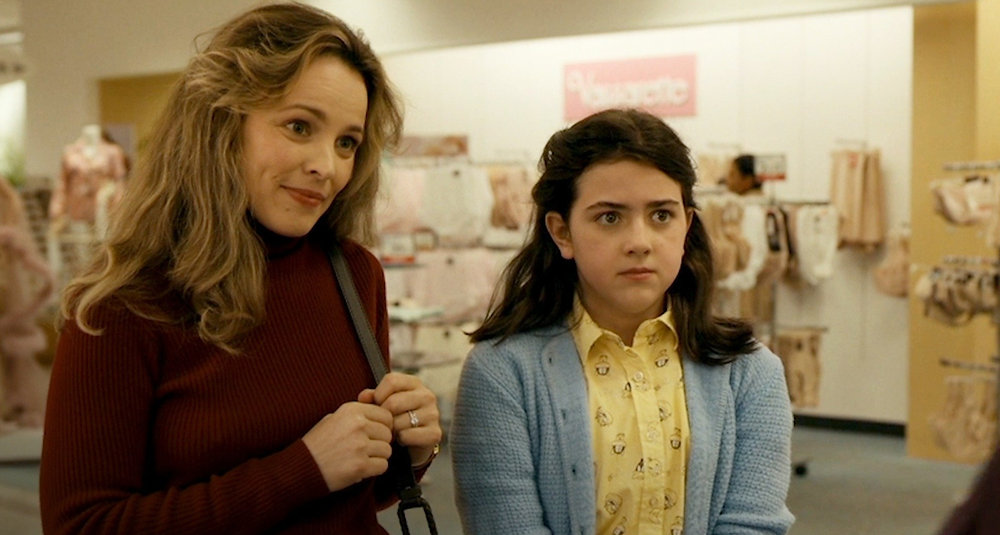Best cheap TVs 2025: 6 fantastic value sets for movie fans tested
For very little money you can buy a 4K HDR TV with a great smart platform and decent gaming specs
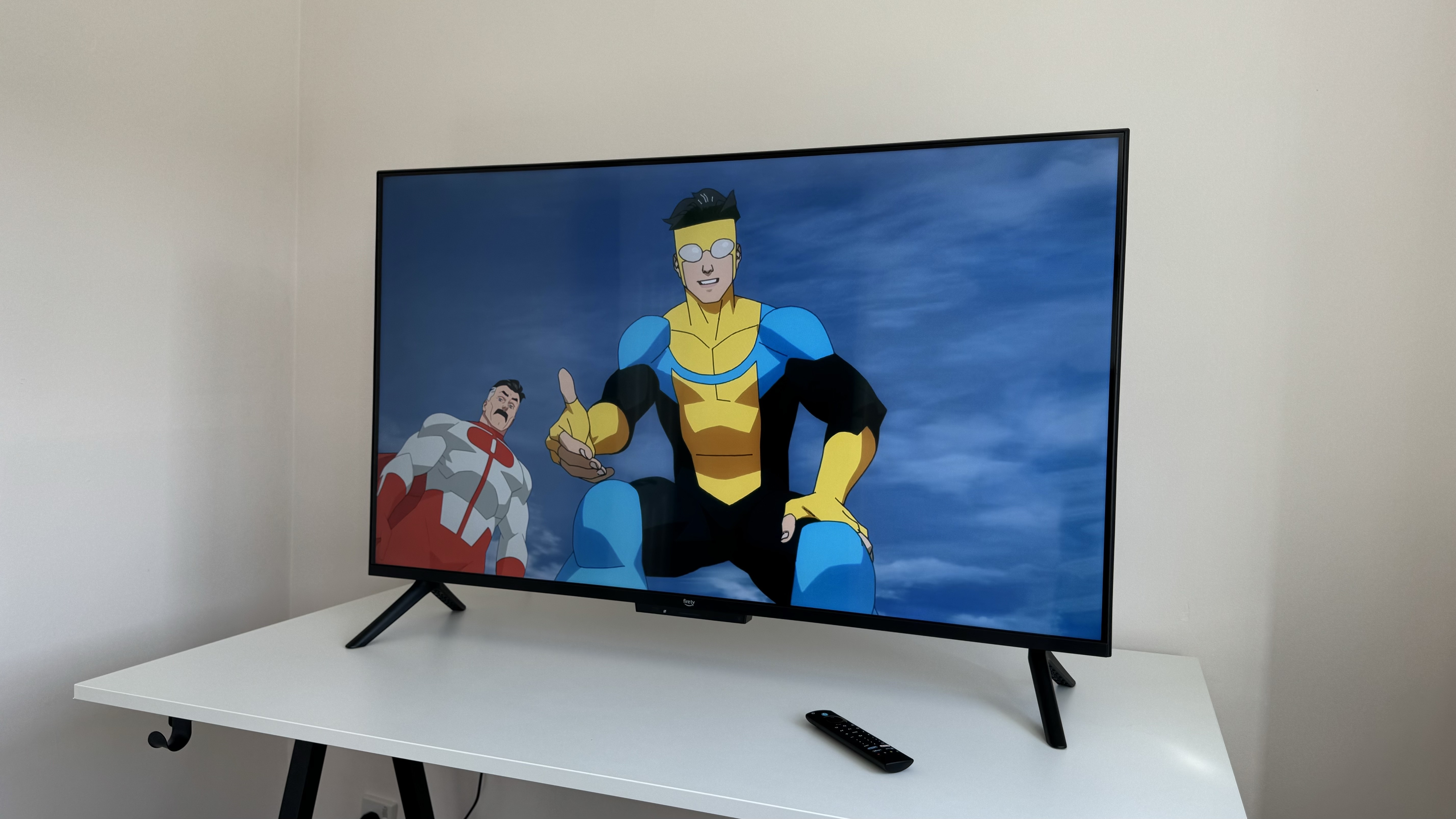
Looking to secure a cheap TV that provides solid picture quality, reliable audio and robust app and gaming support? It can be a truly difficult task. Luckily, we are regularly on the lookout for cheap sub-£500 / $500 sets that meet all those criteria.
Here, we have highlighted the best TVs available at a bargain price, all tried and tested by our expert reviews team. Just one of the TVs below has reached five-star heights, but don't let that put you off; the rest of the sets on our list all received four stars from our reviewers – still a really positive score and an indication that the set will meet the needs of most.
To put these TVs to the test, we look at every aspect of the set and compare it with its rivals, in our dedicated testing rooms. You can read more about how we test bargain TVs at the bottom of this page.
So, then, here are the best great-value TVs we recommend buying at the moment.
The quick list
The table below offers a quick look at all the cheap TVs we recommend in this article. Every TV in it has been thoroughly tested by our team of experts in one of What Hi-Fi?'s viewing rooms, so you can trust our advice.
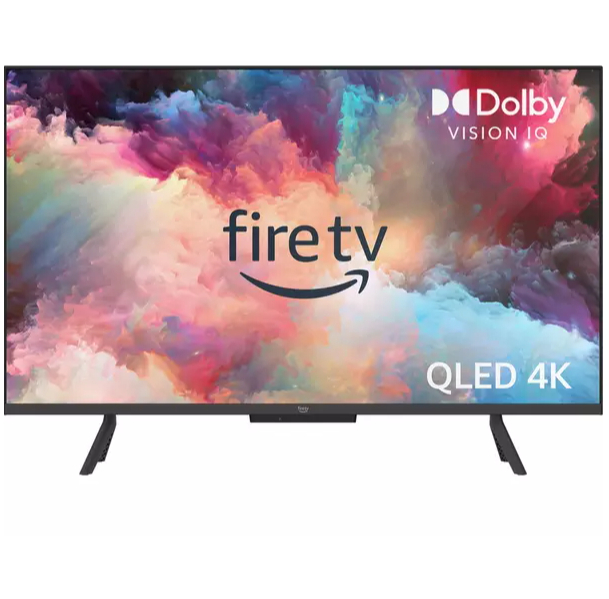
Best overall
While it's officially priced above £500, the 50-inch version of Amazon's Omni QLED is regularly available for much less. When it is, it's the best cheap TV you can buy.
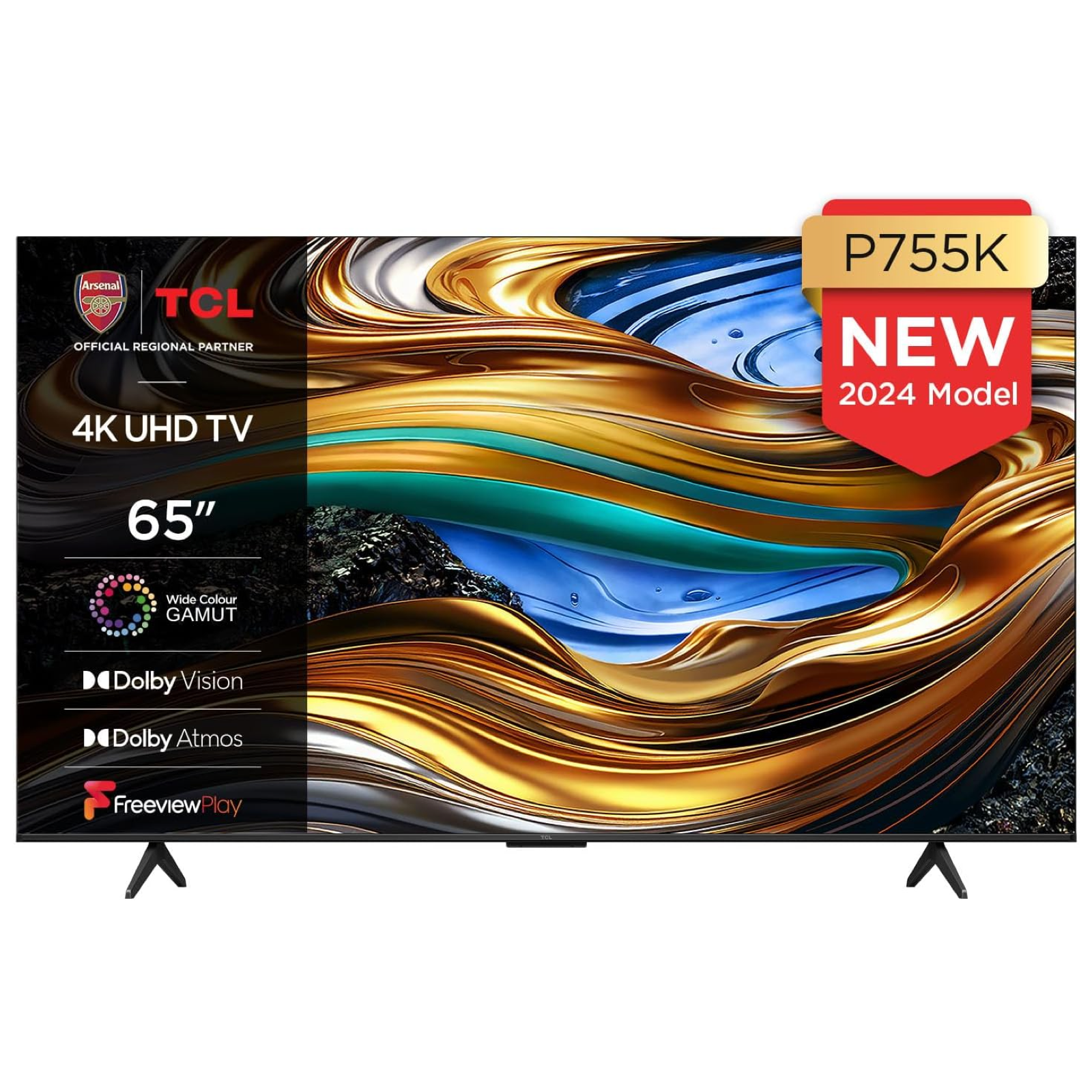
Best 65-inch
TCL has a strong track record in the affordable end of the market and the P755K is a great example why.
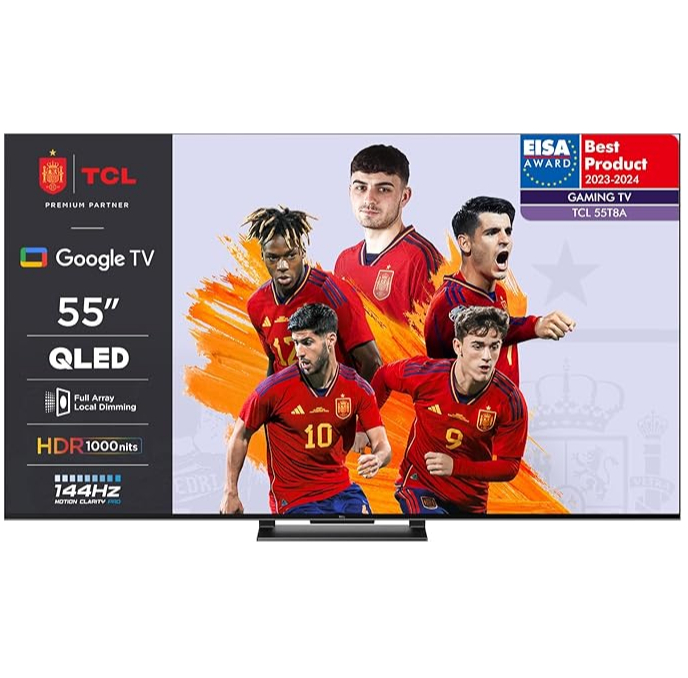
Best 55-inch
The TCL C745K is a little long in the tooth, but while stocks last it's the best 55-inch TV we've reviewed and recommend.
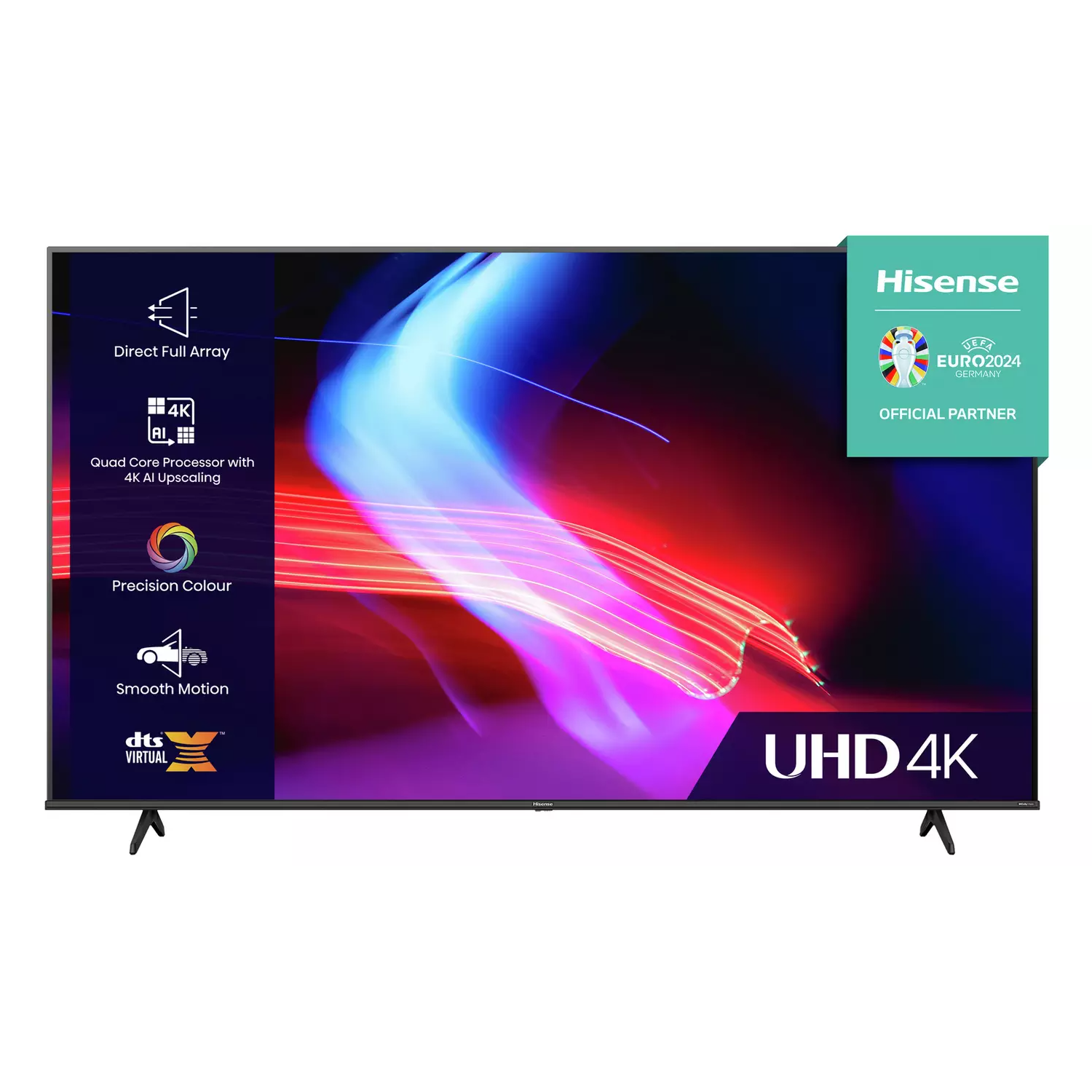
Best 43-inch
If £500 is a stretch too far, this Hisense offers a 43-inch screen, loads of features and consistent picture and sound quality for roughly half that amount.
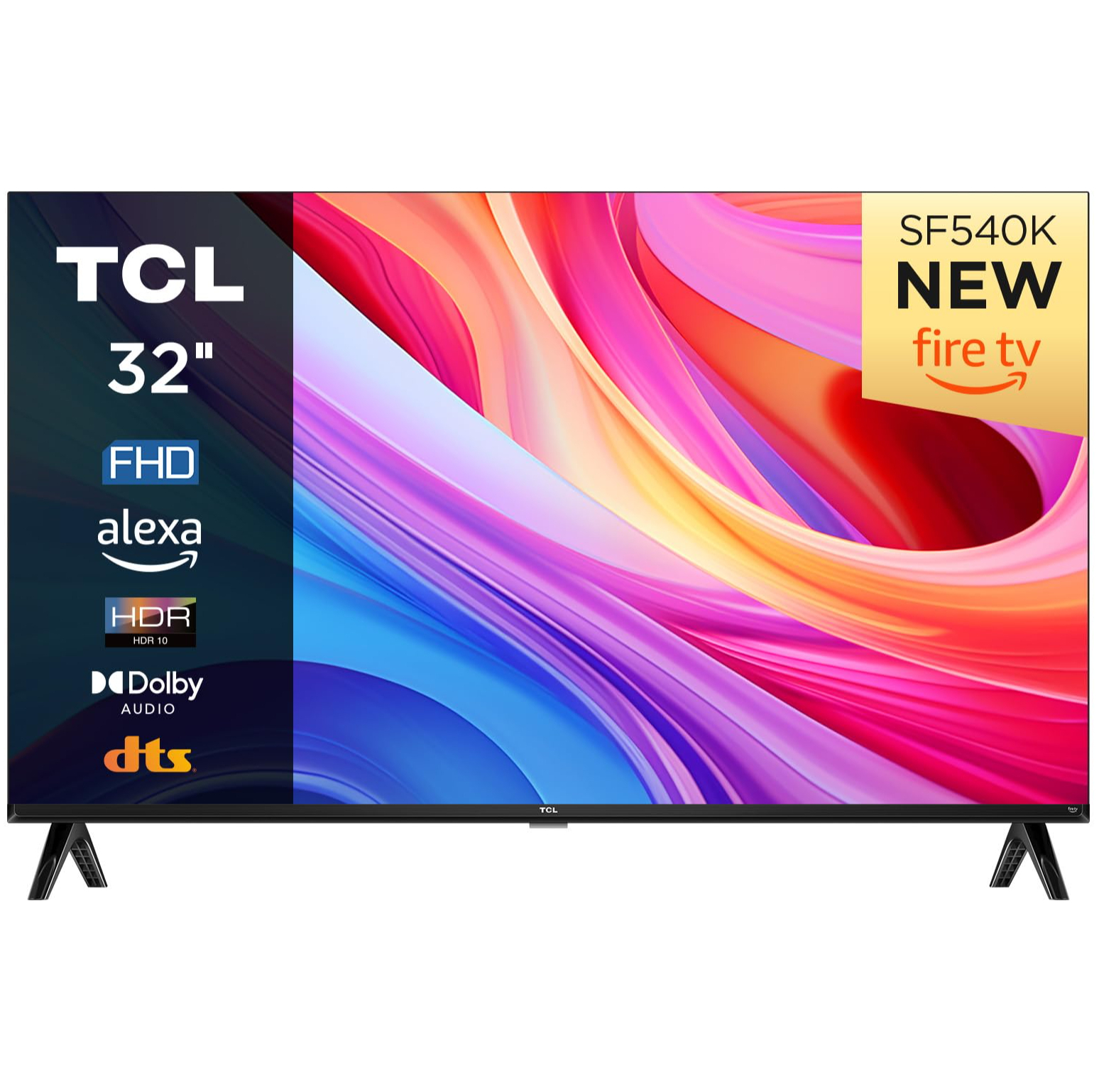
Best 32-inch
This TCL presents an option that's excellent value for money, packing slick Fire TV streaming smarts and a pleasing balance of crucial picture elements into a very affordable TV model.
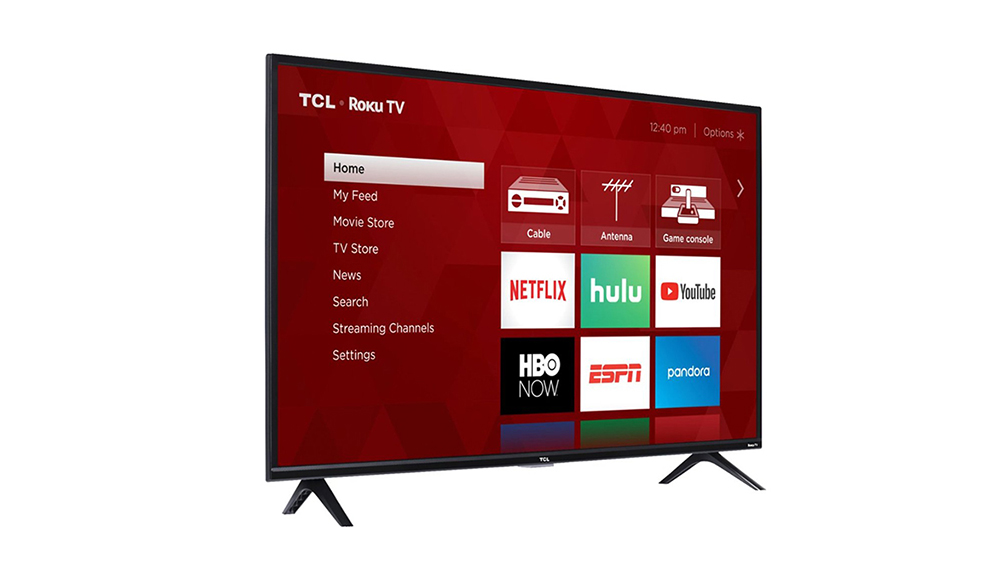
Best 24-inch
The RCA Roku TV is a no frills small TV that earned praise from our testers by focussing on getting the basics right.

I have been reviewing TVs for nearly two decades. This gives me a holistic knowledge of the TV market, including cheaper sets. That’s why, where merited, you will often find me recommending more affordable TVs alongside flagship OLEDs. In this guide I and the wider What Hi-Fi? reviews team check each set in dedicated viewing rooms to ensure it delivers an enjoyable home cinema experience and the best performance possible at its price – so you can trust our buying advice.
The best cheap TVs of 2024
Why you can trust What Hi-Fi?
Still need some convincing or more information? Scroll down and you'll see a detailed breakdown of why we recommend each TV in this list based on our direct experience using it in our dedicated test rooms.
Best overall
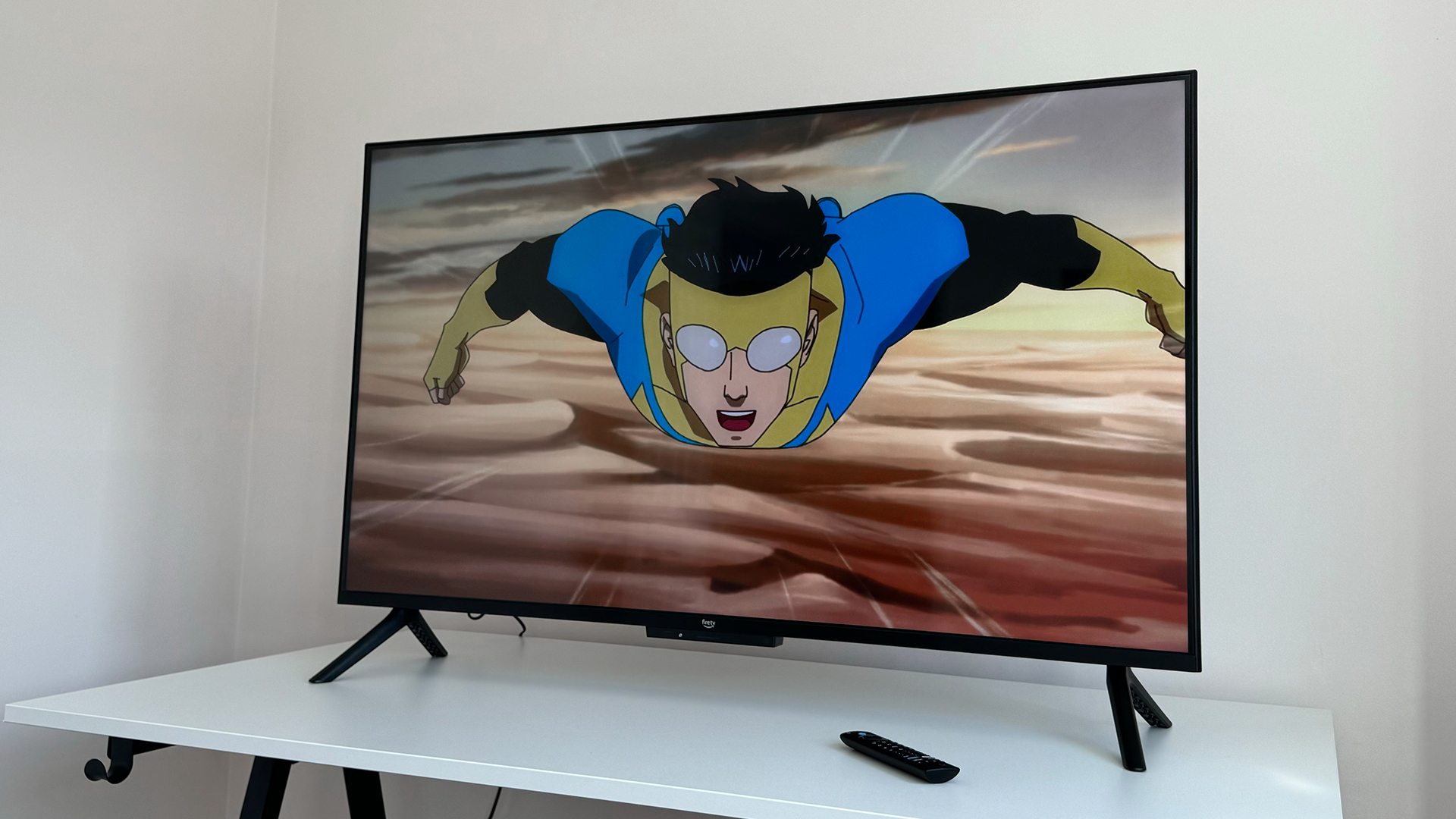

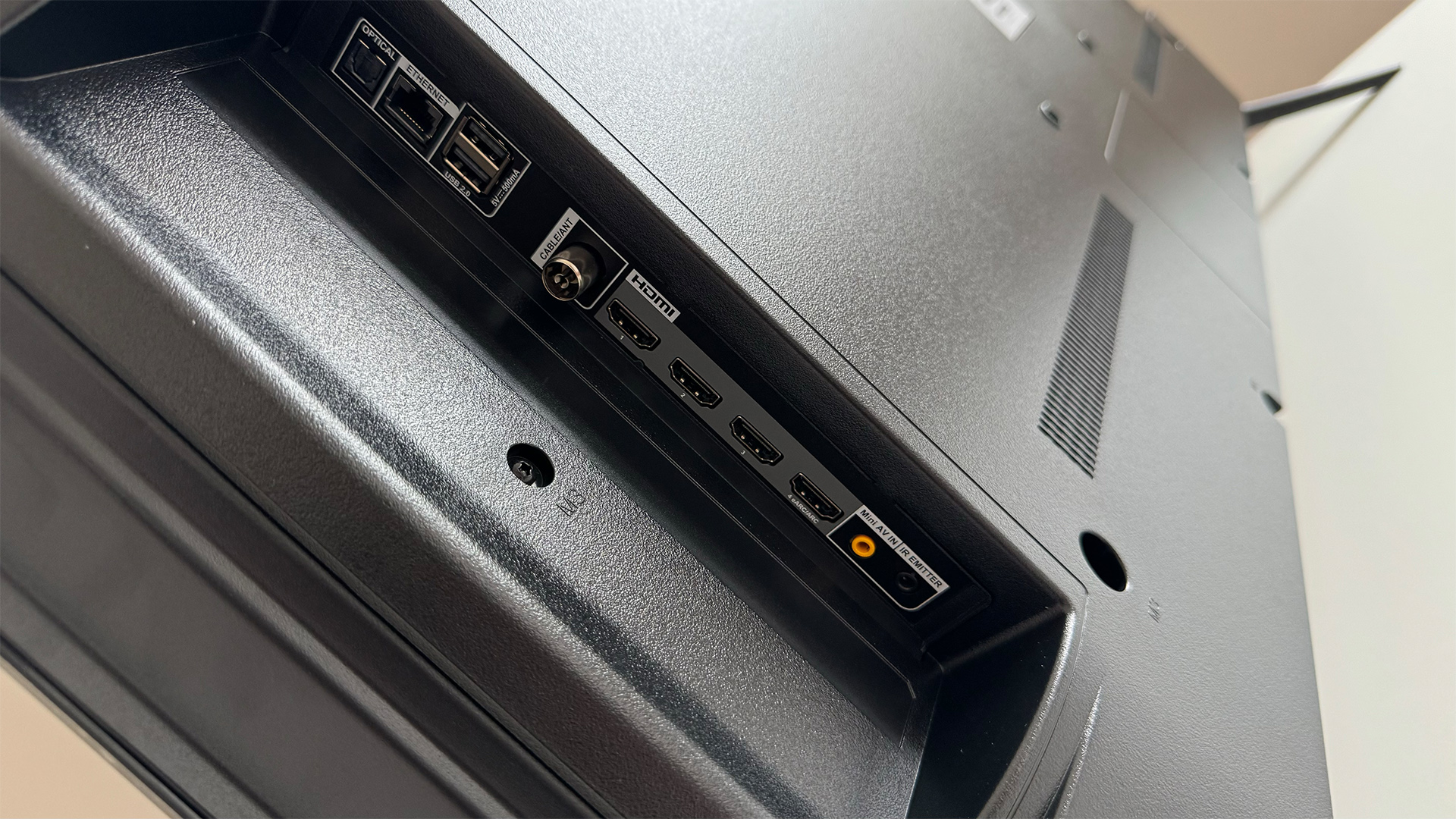
Specifications
Reasons to buy
Reasons to avoid
The 50-inch version of the Amazon Fire TV Omni QLED is the best cheap TV we have tested and the only product to earn a perfect five stars on this list.
Unboxing it in our test rooms, our reviewers were immediately impressed with the set, with Amazon having cut surprisingly few corners while keeping costs down.
The key selling point is undeniably its QLED panel. The panel uses Quantum Dot technology originally developed by Samsung. It aims to boost picture performance by passing light from the backlight through a layer of Quantum Dots, in a bid to boost colour accuracy and vibrancy.
During our tests, the screen didn’t match the performance of OLED sets in key areas, such as black level and contrast, but it still delivered an immersive home cinema experience that is a cut above all the similarly priced sets we’ve tested recently.
Whether it was Dolby Vision performance watching Indiana Jones and the Dial of Destiny, or when we tested peak brightness with Pan, the 55-inch Omni QLED delivered a balanced, consistent picture. This plus its inclusion of ALLM and VRR support for PS5 or Xbox Series X/S gamers led our testers to conclude:
“Budget TVs are hard to get right, but the 50-inch Omni QLED succeeds where others have failed thanks to a consistent, considered performance and impressive feature set.”
We are flagging the 50-inch model specifically, as we found it is the best performer in Amazon’s current fire range.
The 50-inch model offered better shadow detail during dark scenes when we ran it against the larger 65-inch Amazon Fire TV Omni QLED, though that larger model is still a very good TV in its own right. The 43-inch Amazon Fire TV Omni QLED, meanwhile, is downright poor. It lacks the local dimming of its larger siblings and delivers a very flat and pale picture overall.
So when shopping on Amazon, keep in mind we are specifically recommending the 50-inch model in this list for these reasons.
Read the full Amazon Fire TV Omni QLED review

Buying a cheap TV is tricky as, while there are plenty to choose from, based on our experience most aren't good enough to deliver a decent home cinema experience. That's why so many of the recent affordable sets to pass through our viewing rooms have scored four or three stars. If the picture and sound on offer are so bad they actively distract you while watching movies, we can't recommend the TV, no matter how cheap it is. The Amazon Fire TV Omni QLED is a rare exception and the main TV I recommend to most buyers on a budget. I'd strongly urge you to consider it if you can't spend more than £500 and don't need a giant 55- or 65-inch set, as a result.
Best 65-inch
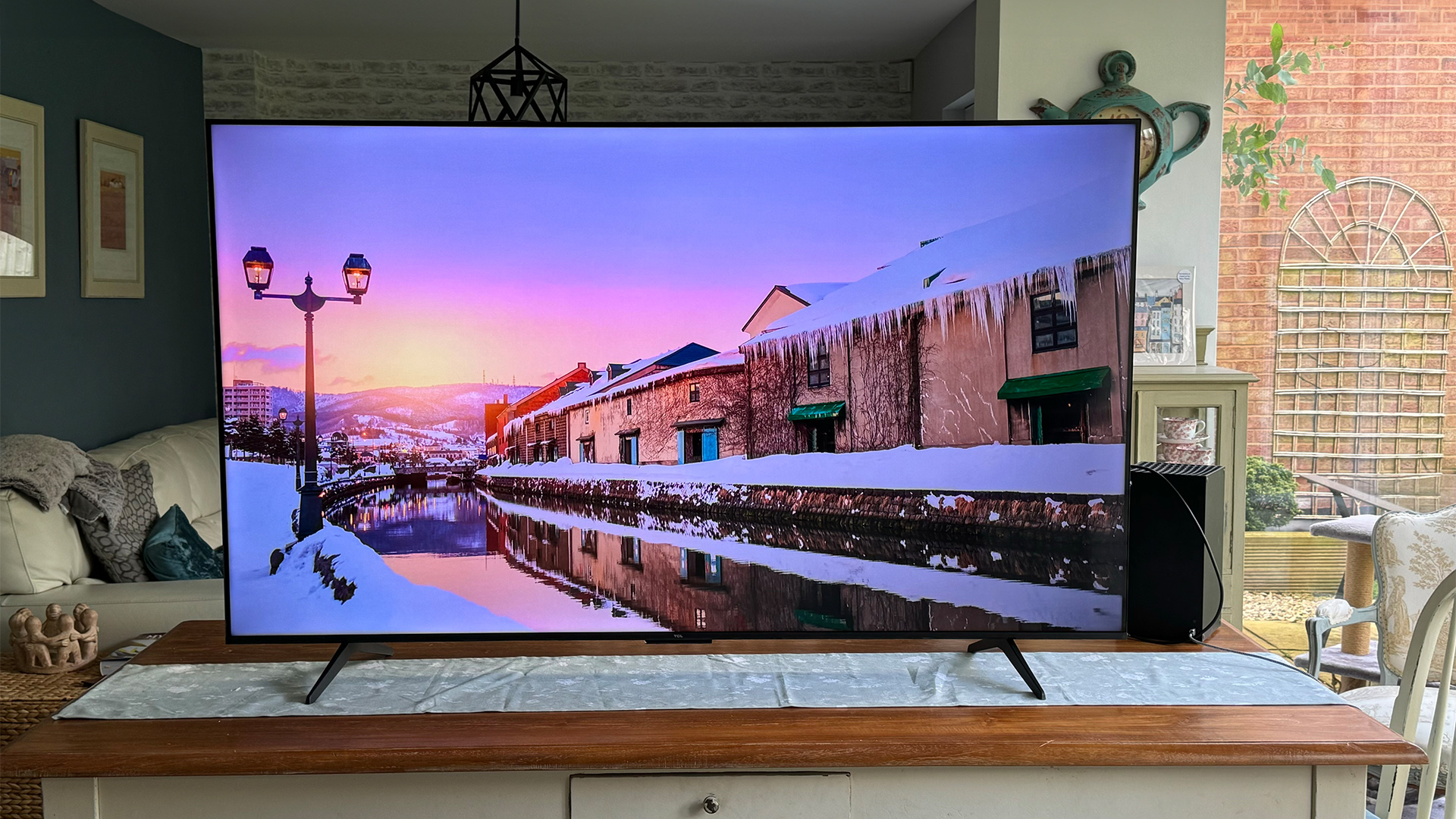
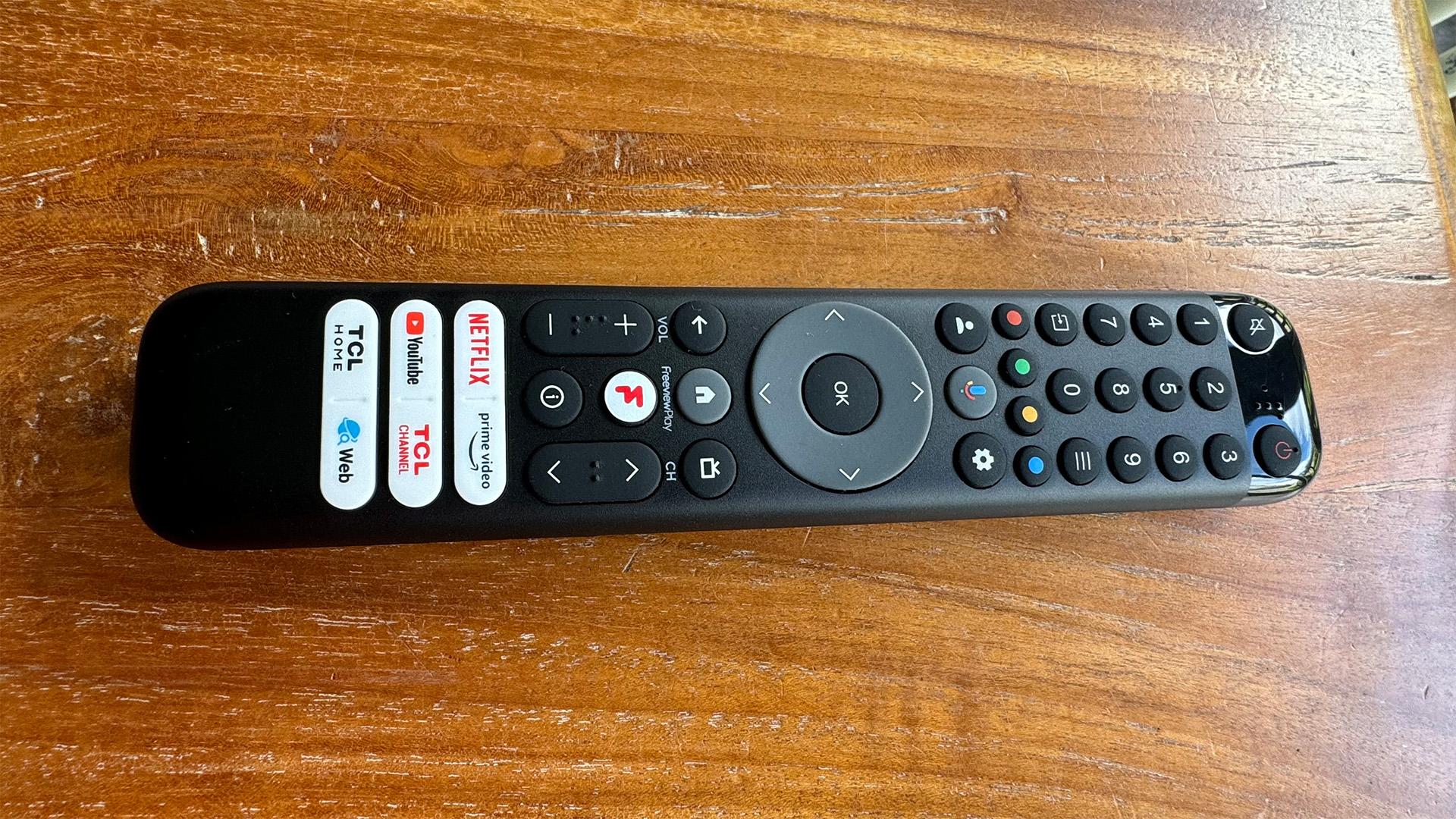
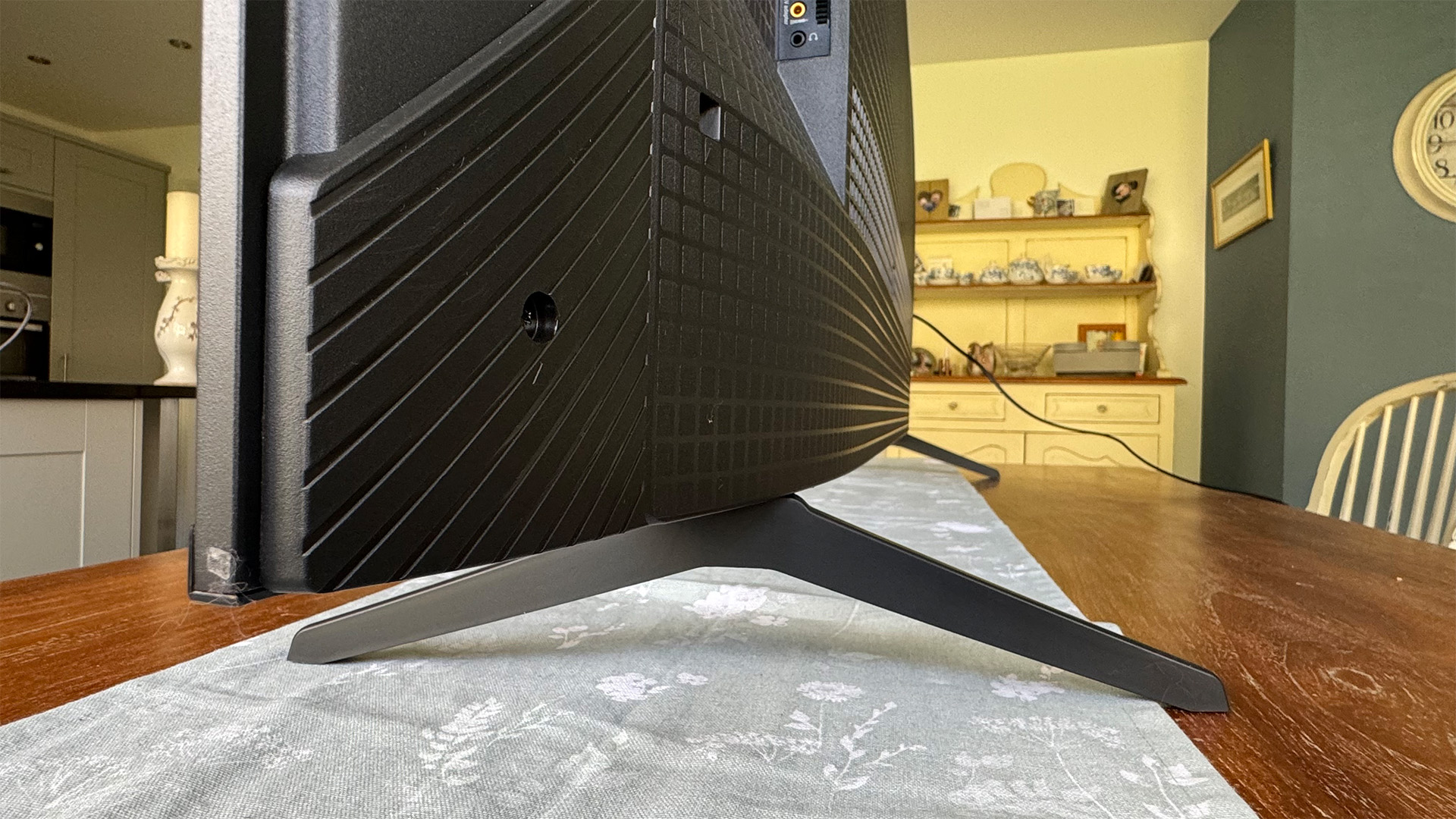
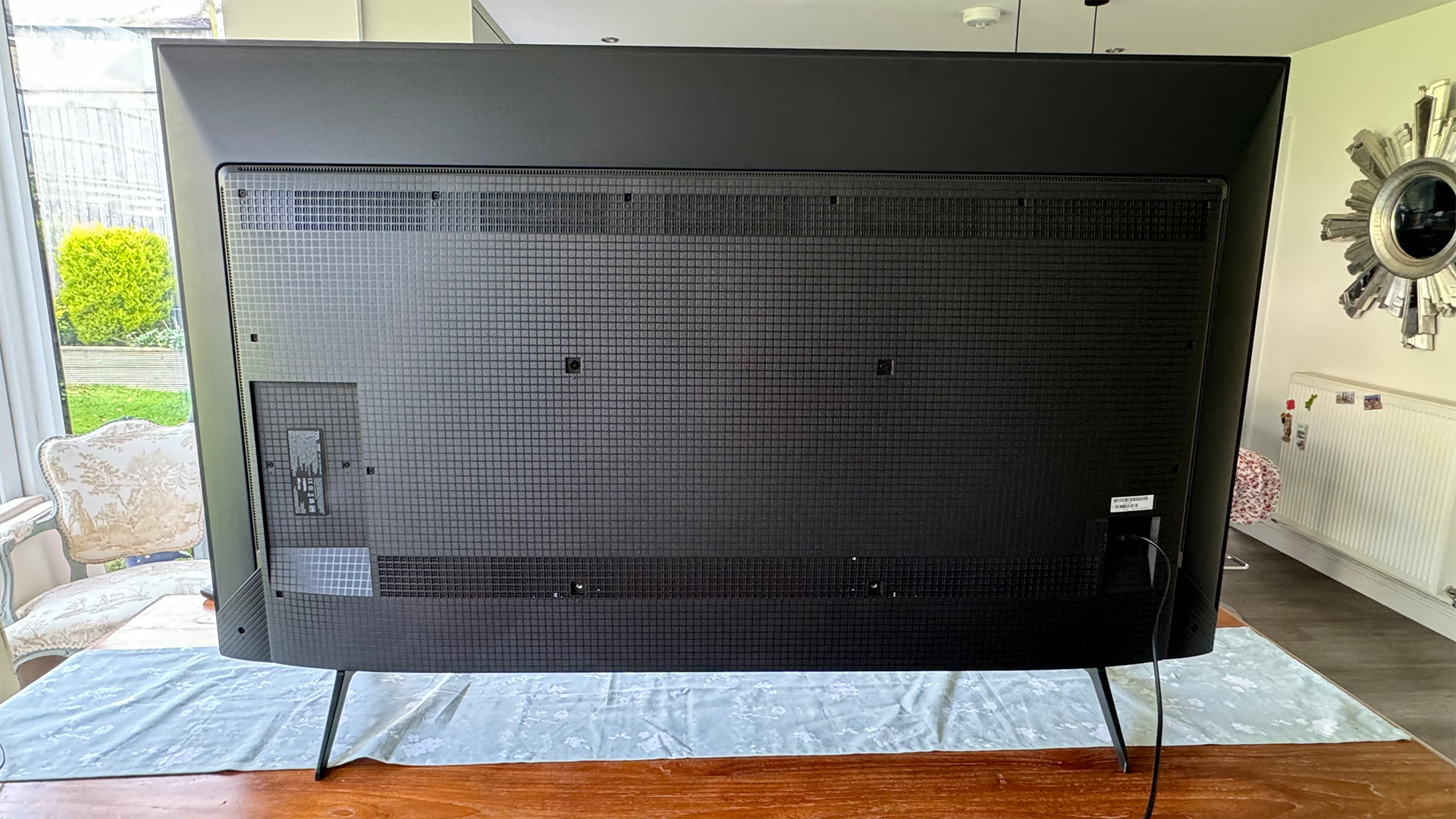
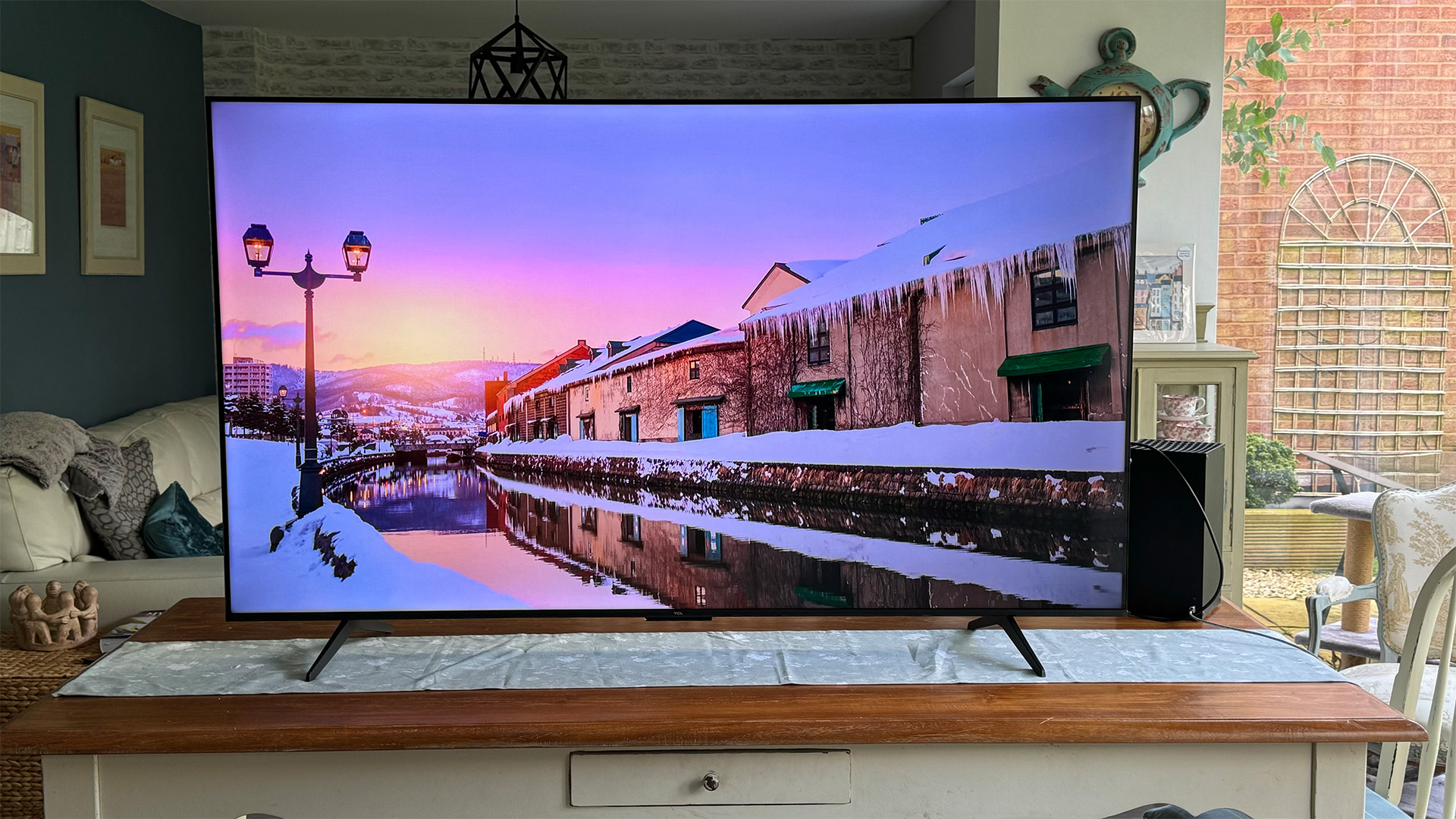
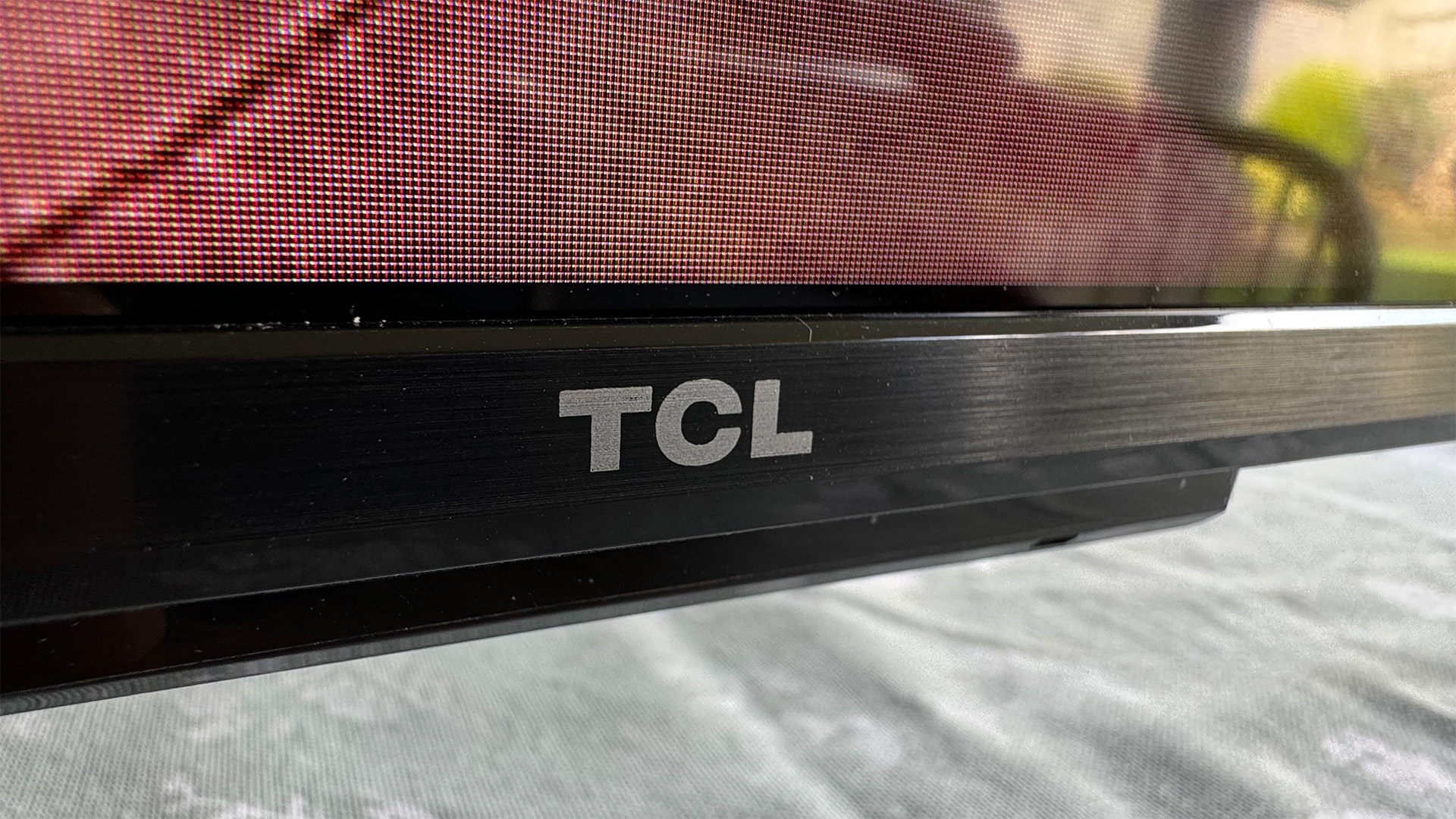
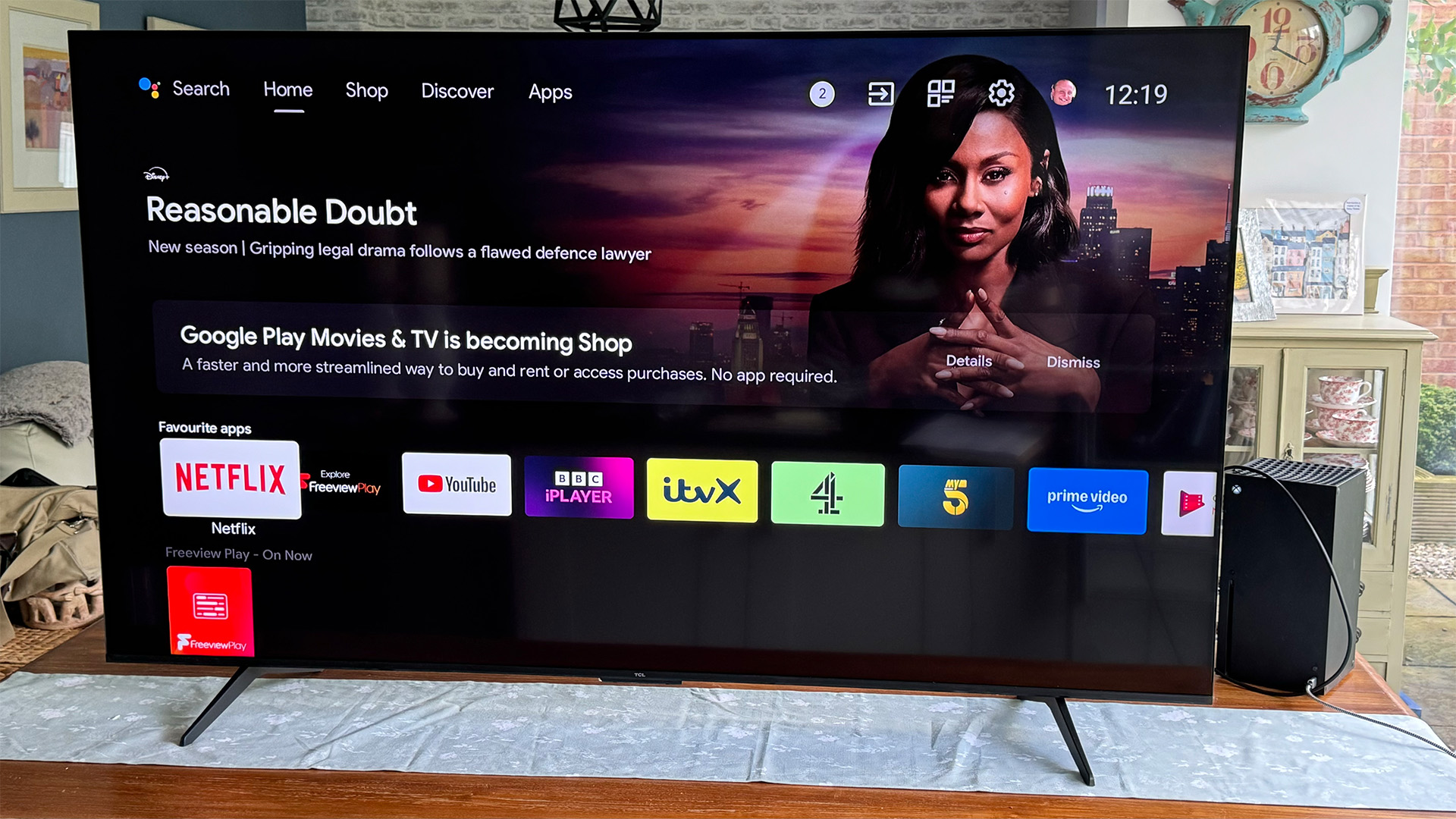
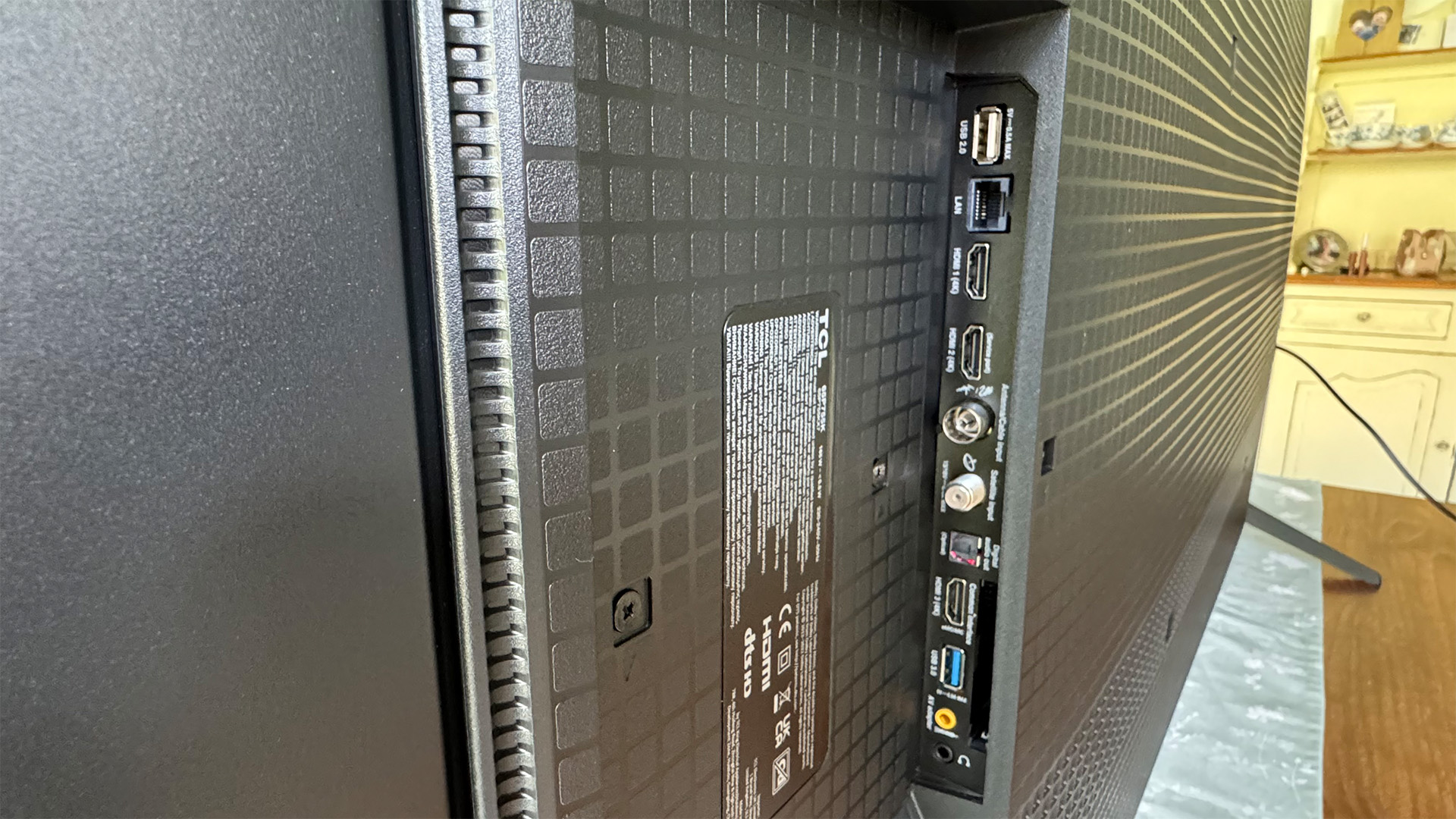
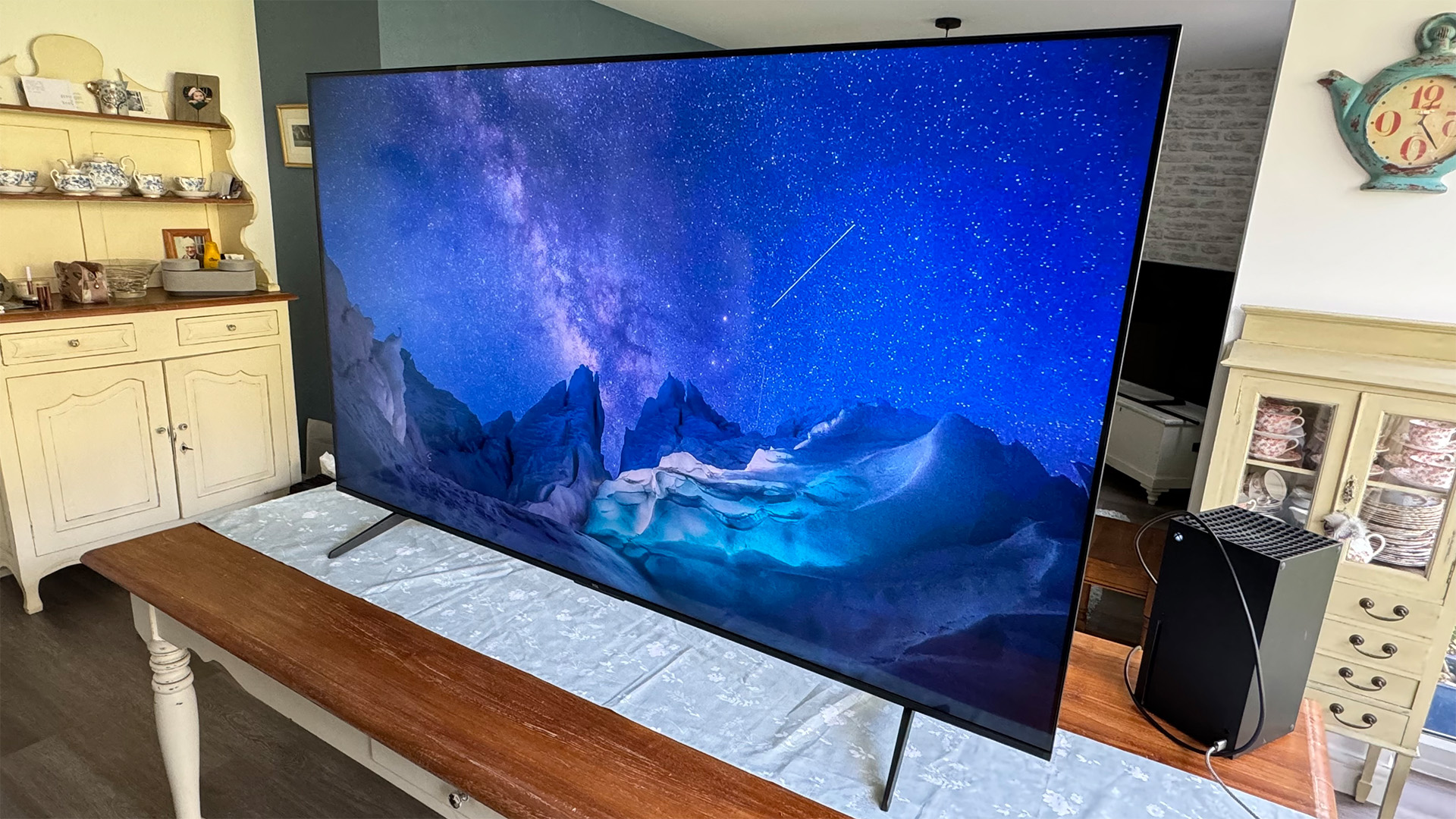
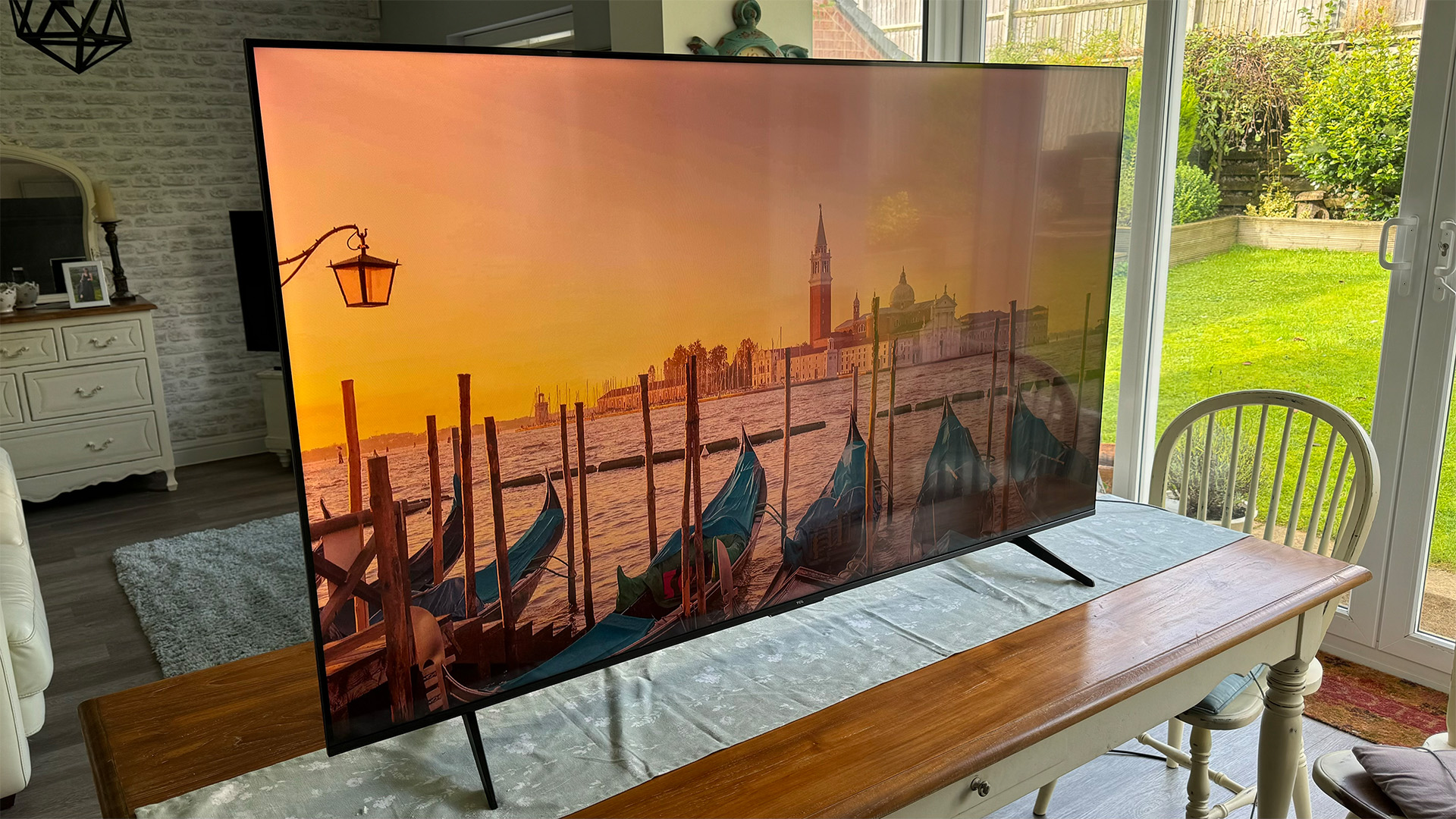
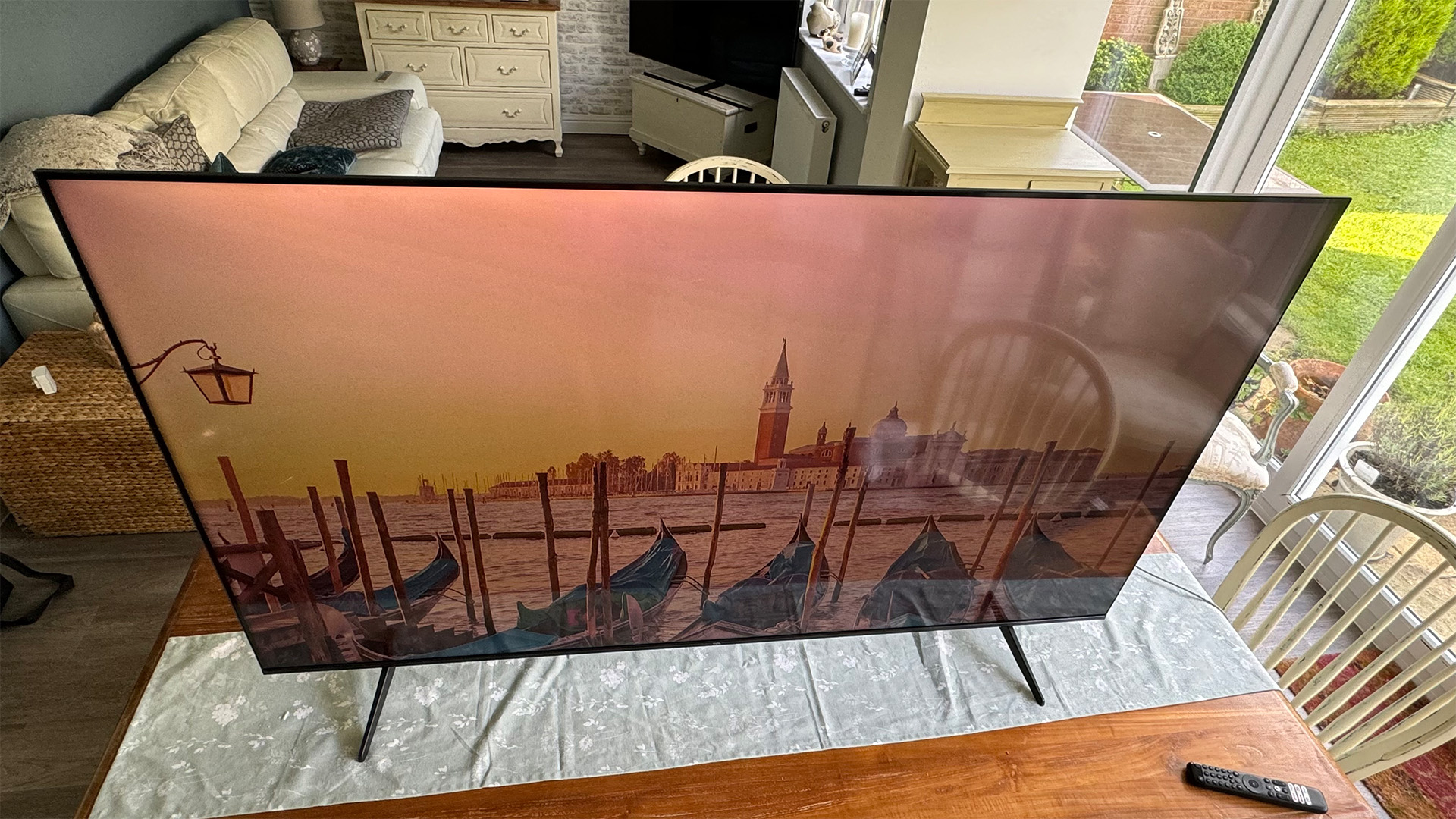
Specifications
Reasons to buy
Reasons to avoid
There’s a reason 65-inches is such a popular size for TVs – they’re big enough to offer a truly big screen experience, but not so big that they become the focal point of a decent sized lounge.
But, based on our decades of testing, they’re also the hardest size to find a good option for if you’re short on cash. Which is why the TCL P755K is such a stand out option for buyers on a budget.
At a technical level it’s impressive featuring robust HDR support for all the commons standards and solid gaming features including 120Hz, VRR and ALLM – which make it a fantastic option for people with a PS5 of Xbox Series X, which require these features to run at full speed. There’s also an eARC, so you can connect a Dolby Atmos soundbar to it – which we’d recommend doing as its sound, like all cheap TVs, is pretty poor.
But most importantly, the TV’s VA rather than IPS panel and direct LED lighting let it deliver one of the best pictures we've seen on a set this price that’s this big. We said as much in our review where our testers reported:
"Despite not using Quantum Dots, tones across the board look surprisingly vibrant – yet not to a degree that looks unnatural or gaudy. Maybe even more surprisingly for such a cheap TV, the engaging vibrancy doesn’t come at the expense of subtle shading, blending and tonal control. So colours tend to look balanced and natural, and they contribute to a good sense of solidity and depth.”
Read our full TCL P755K review
Best 55-inch
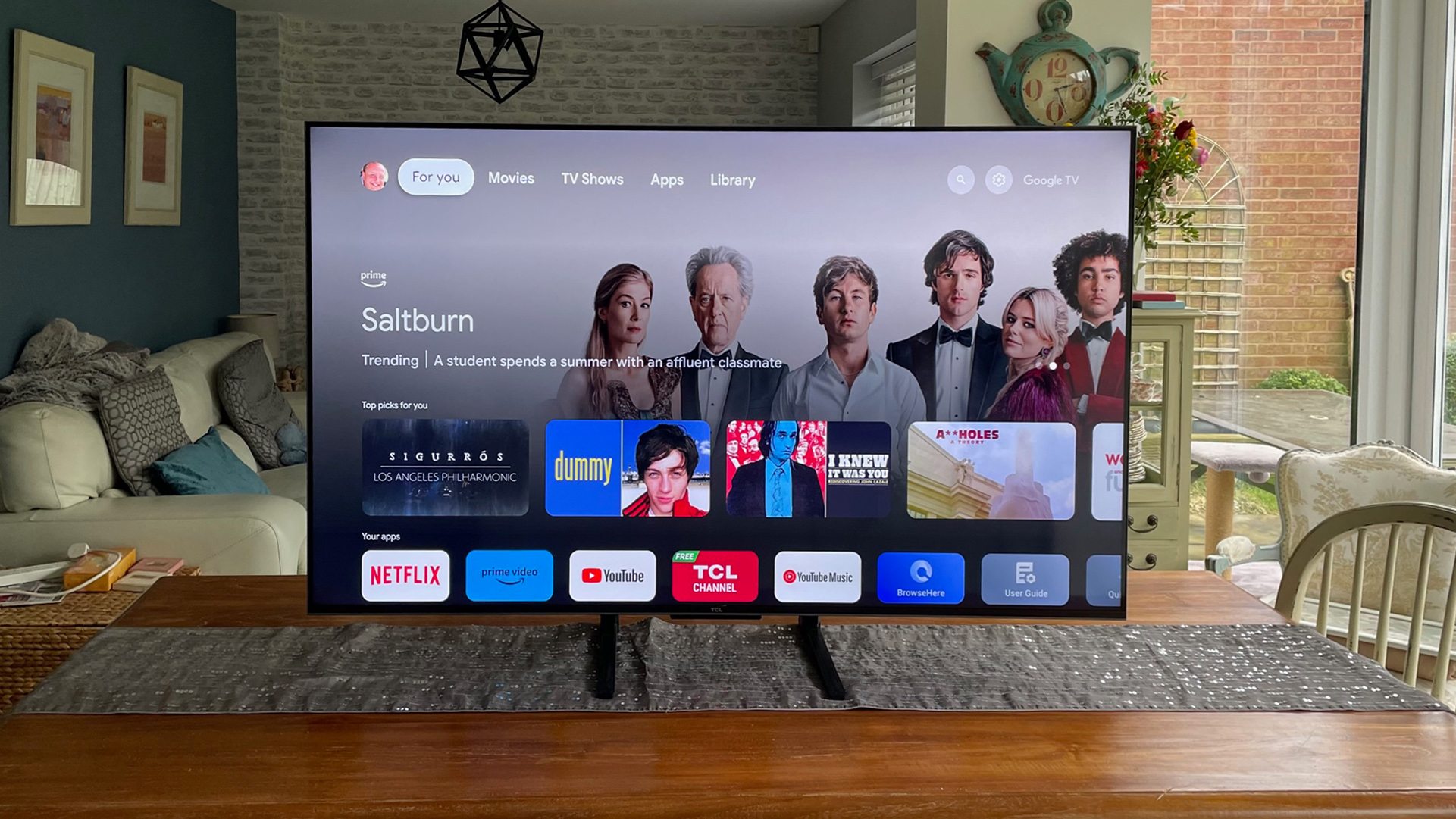
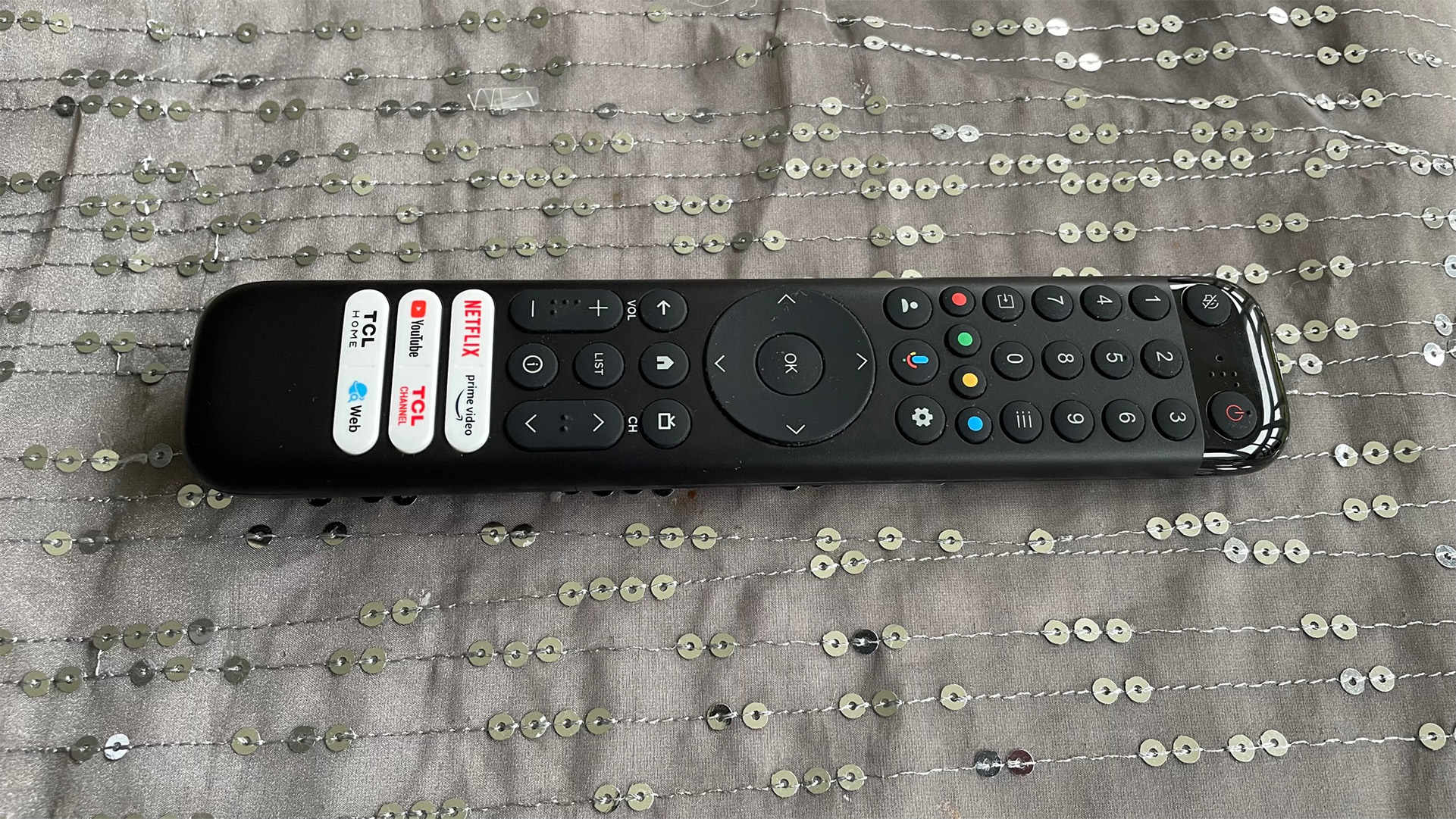
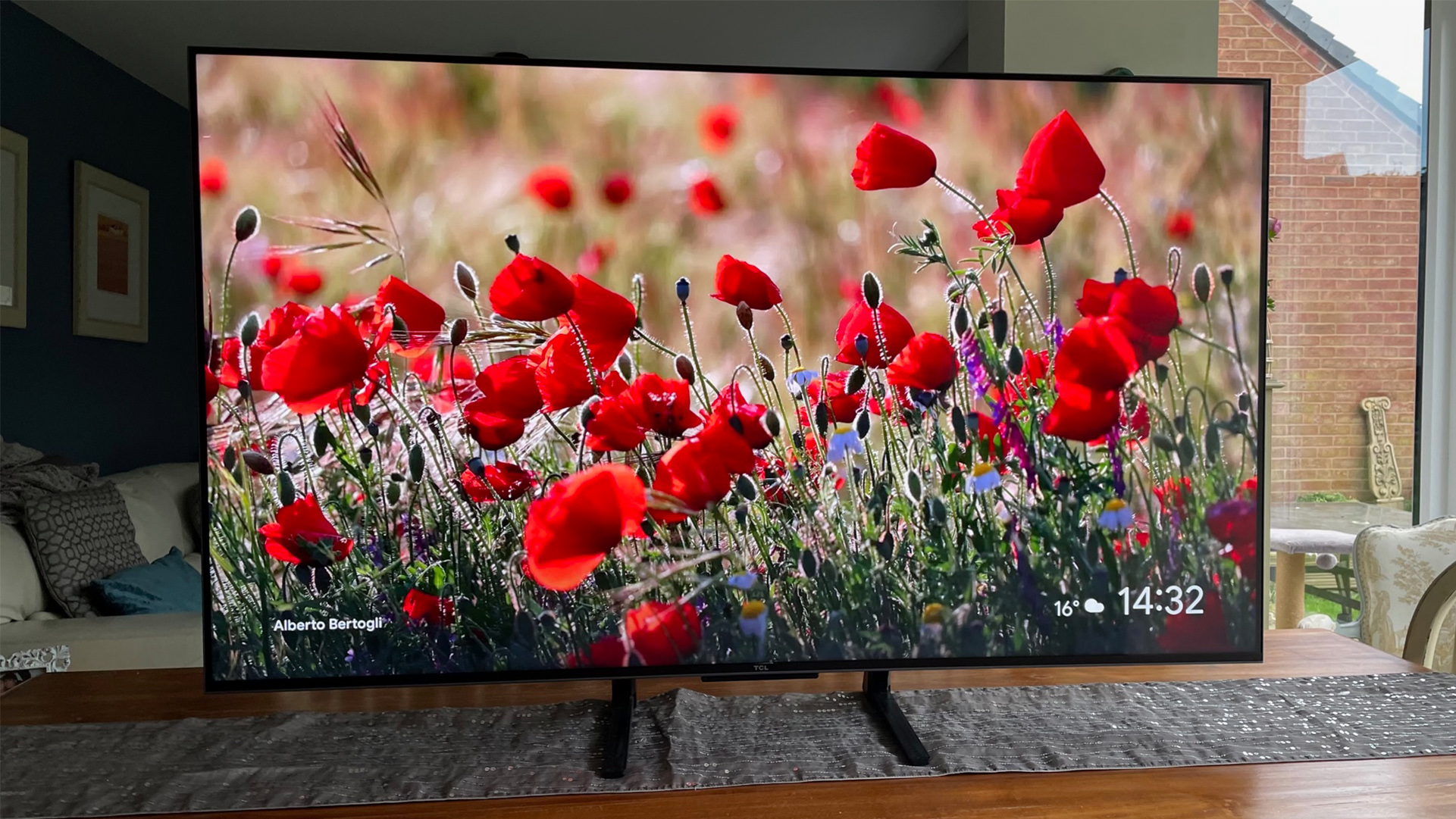
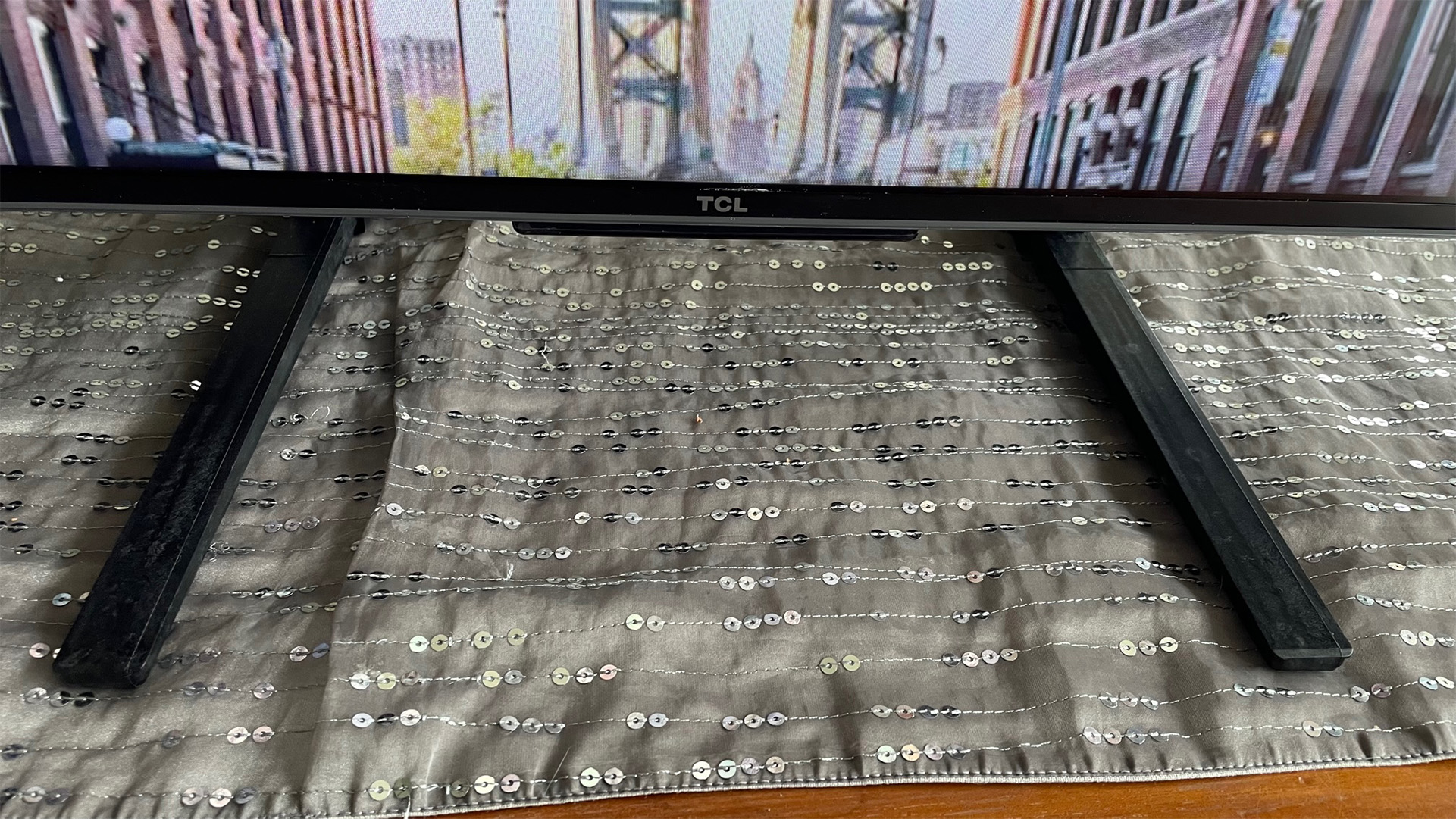

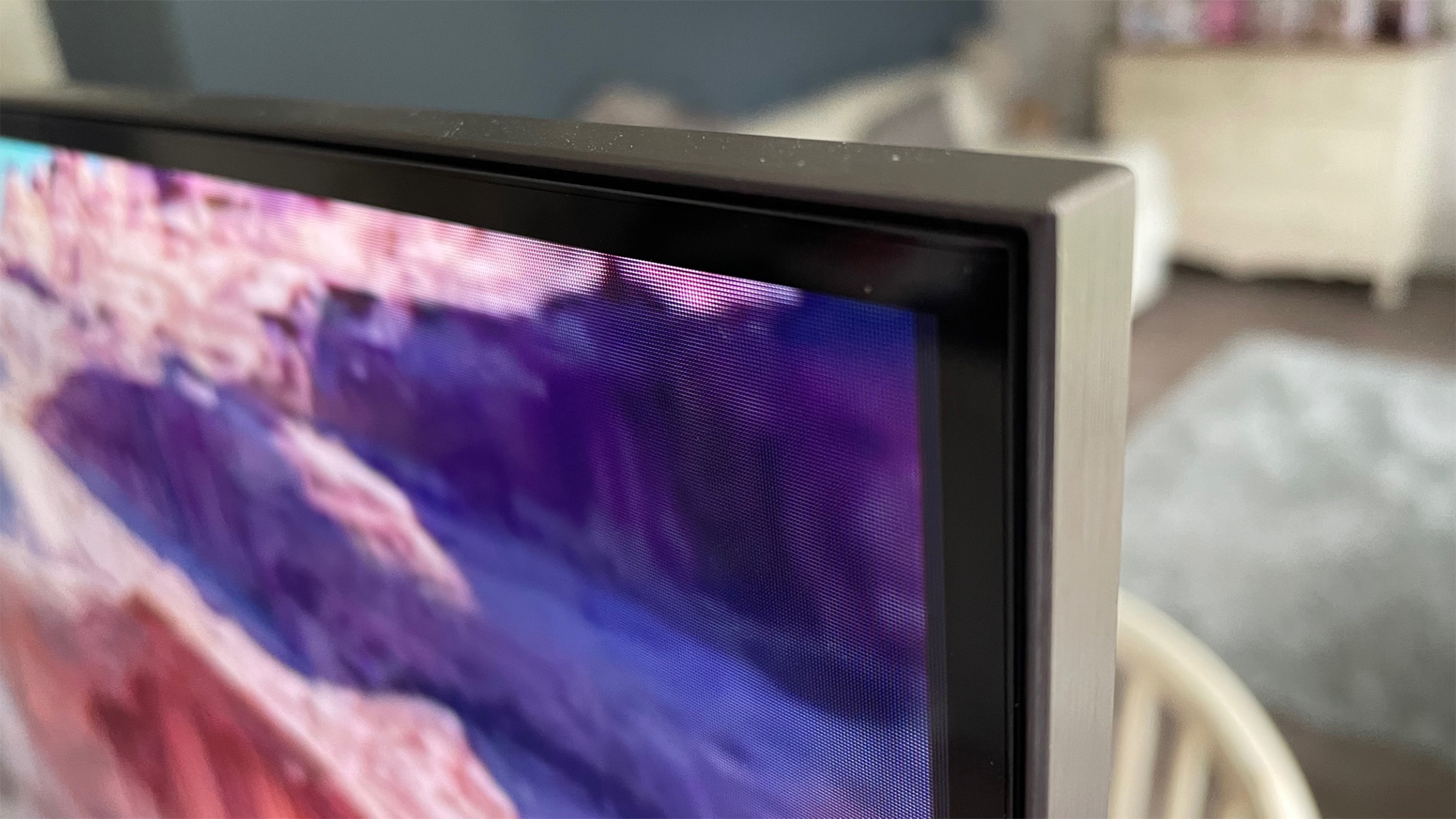
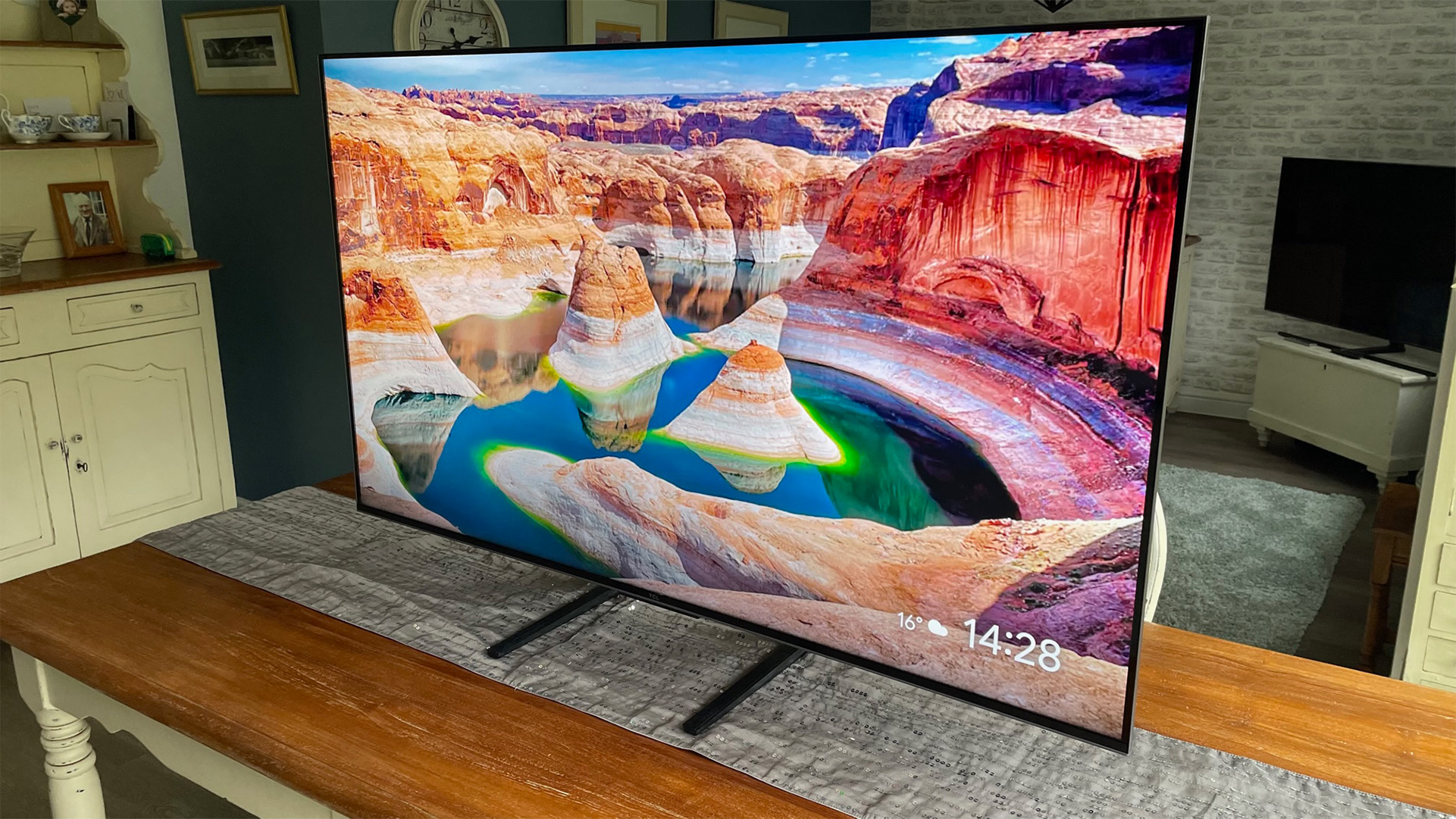
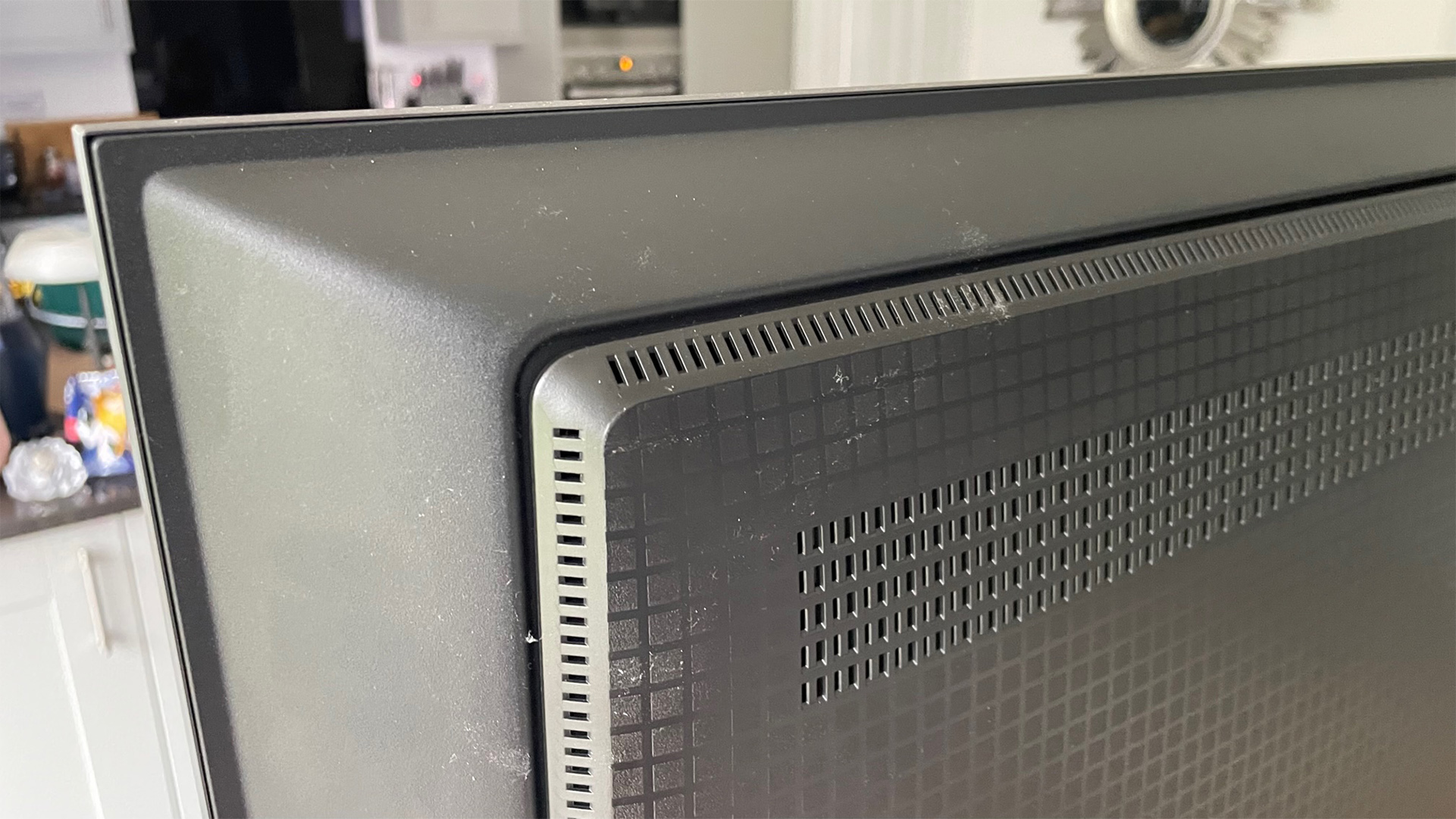
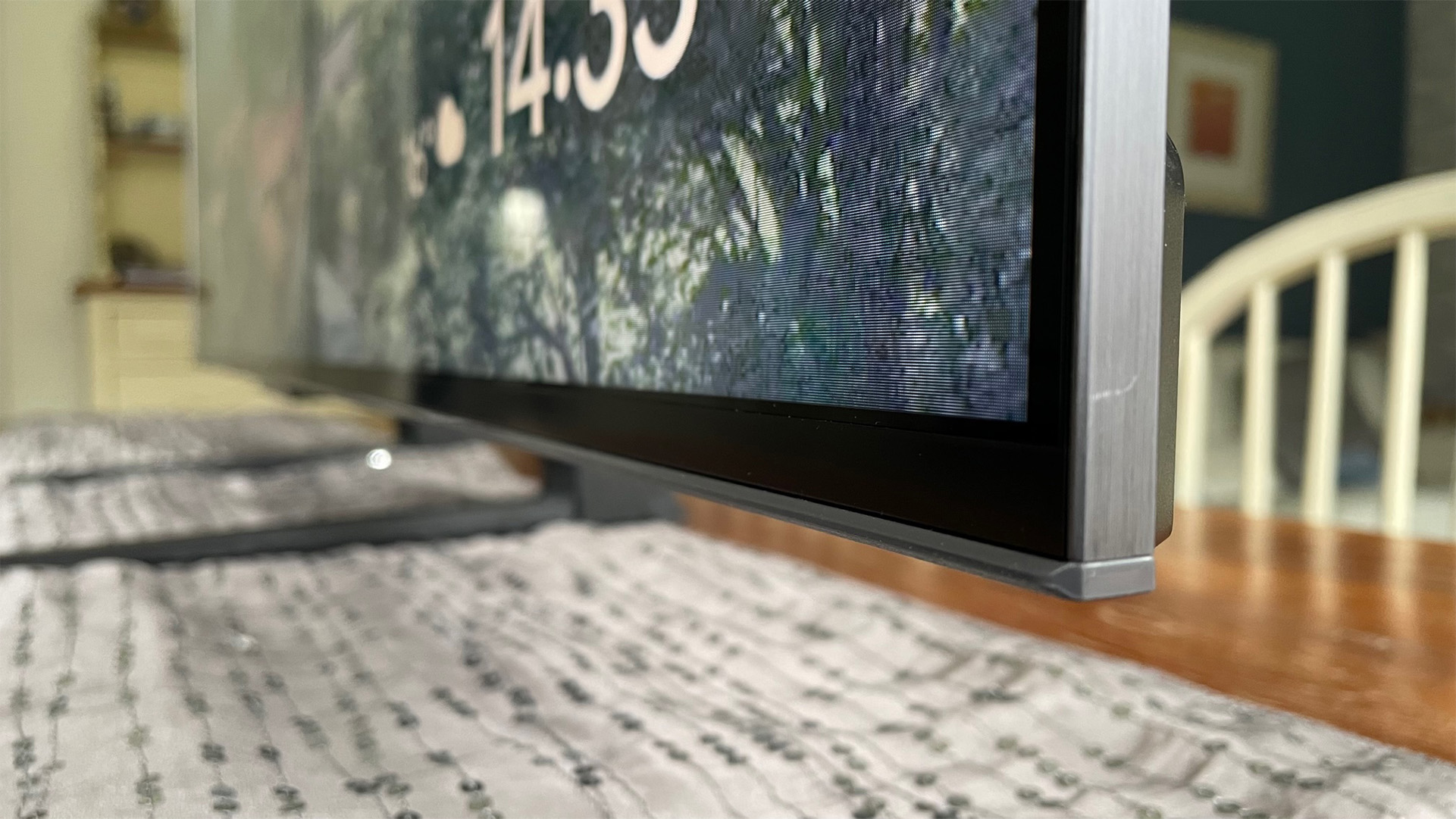
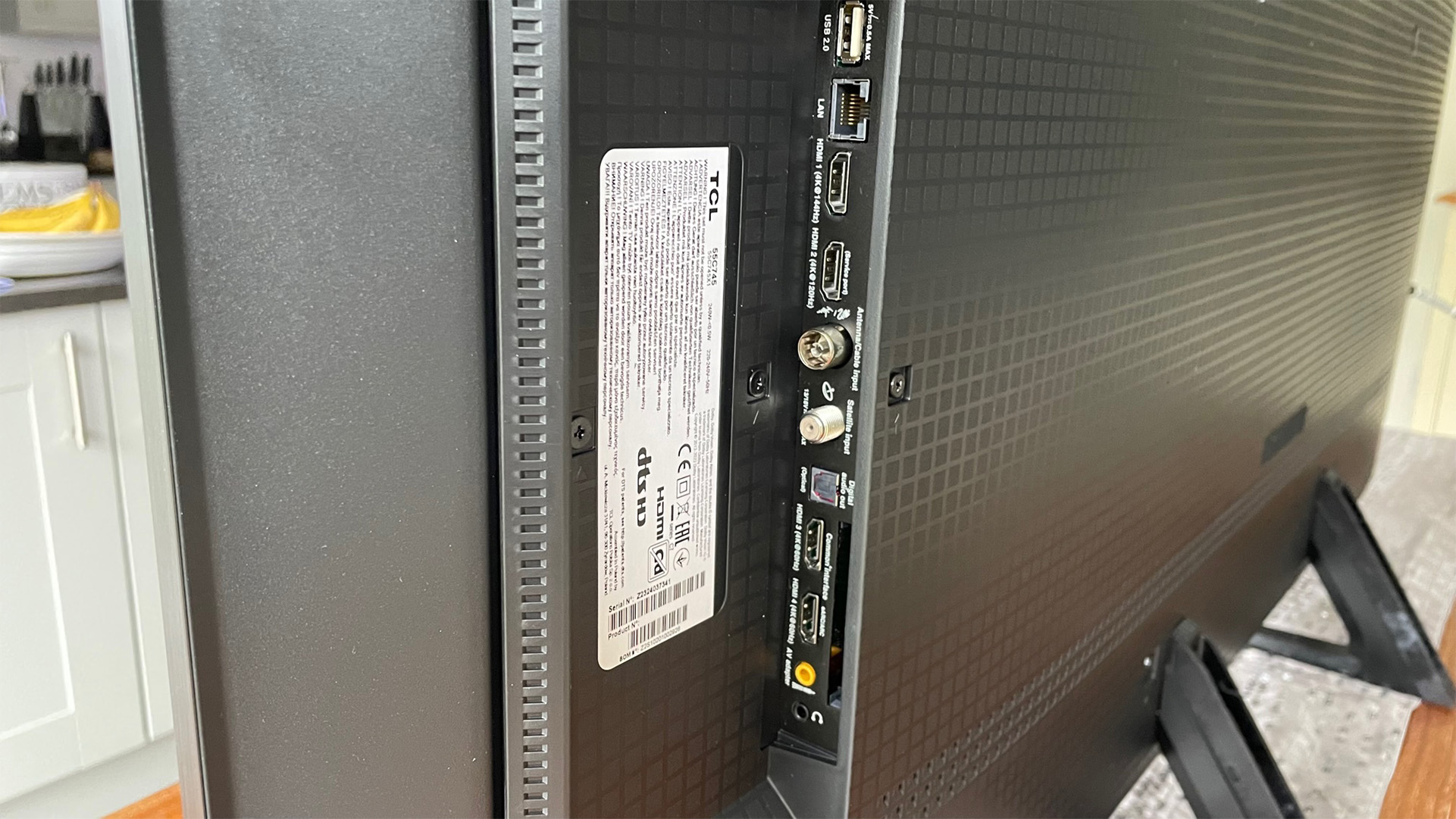
Specifications
Reasons to buy
Reasons to avoid
TCL’s C745K may not be the Chinese tech giant’s most recent TV, but thanks to gradual price drops, and the ongoing availability of stock it’s now our recommended 55-inch cheap TV.
Though the C745K doesn’t have a Mini LED backlight, as the sets one step up in TCL’s range do, it does feature Direct LED with Local Dimming tech, which gives it much better light control than many of the competing sets on this list.
Add to this full fat HDMI 2.1 connectivity, with 4K/120Hz, ALLM and VRR – key features needed to let an Xbox Series X/S or PS5 run at full power – and it’s also atypically good for gamers, who are a little short changed at this end of the market.
And while we did experience some backlight limitations, with its black level being a little too grey for our liking, it’s also the best performer when it comes to picture quality at its price. Highlights include good contrast levels, excellent colour vibrancy and solid peak brightness levels. Hence our reviewers’ recommendations and conclusion:
“The 55C745K is another strong TCL contender that delivers seriously impressive bang for your buck. Its features, picture quality and sound performance are all comfortably above par for its price point, and we can’t think of any other TV in the same price ballpark currently that can double up so effectively as a gaming monitor.”
Read our full TCL 55C745K review
Best 43-inch
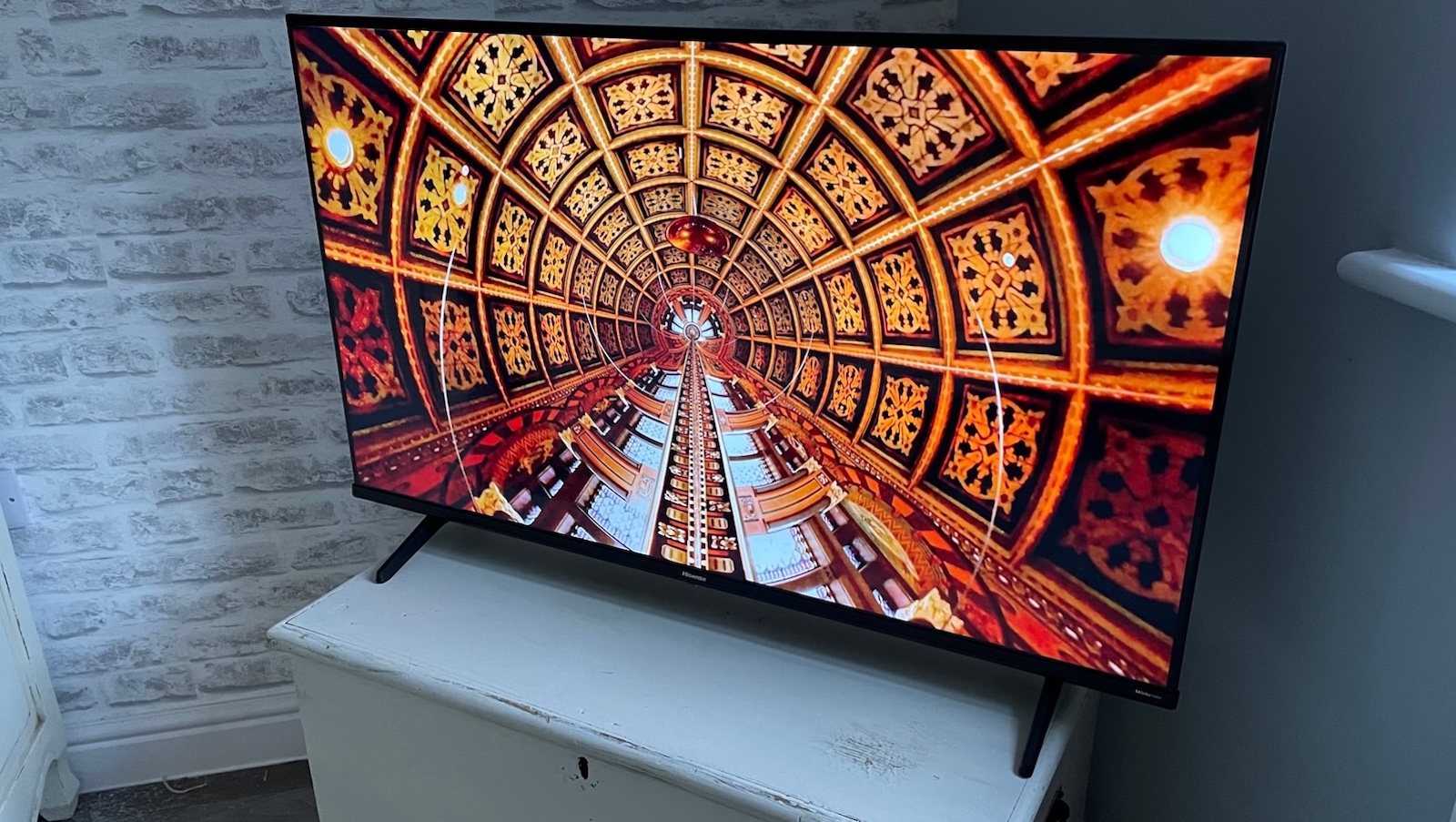
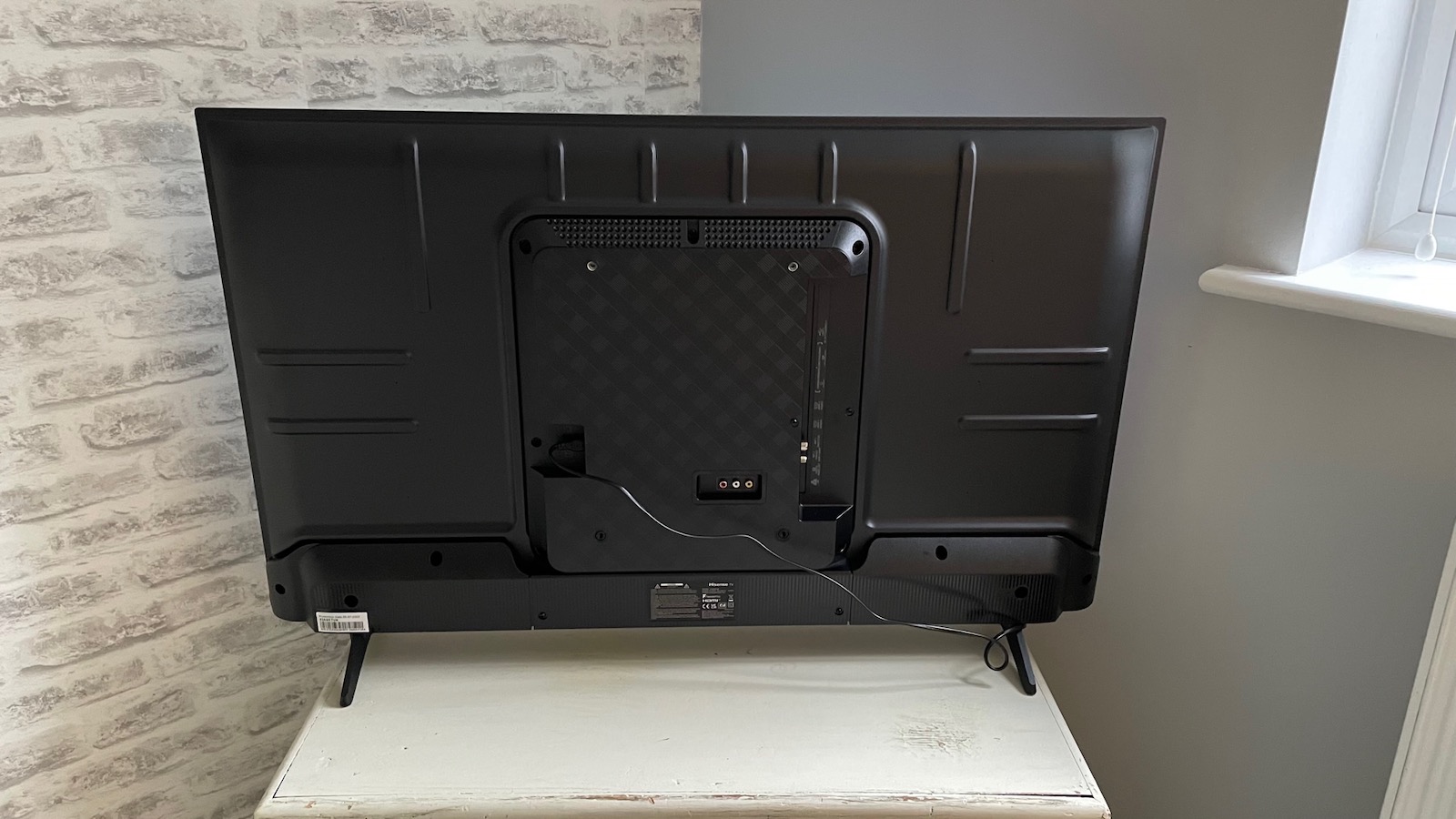
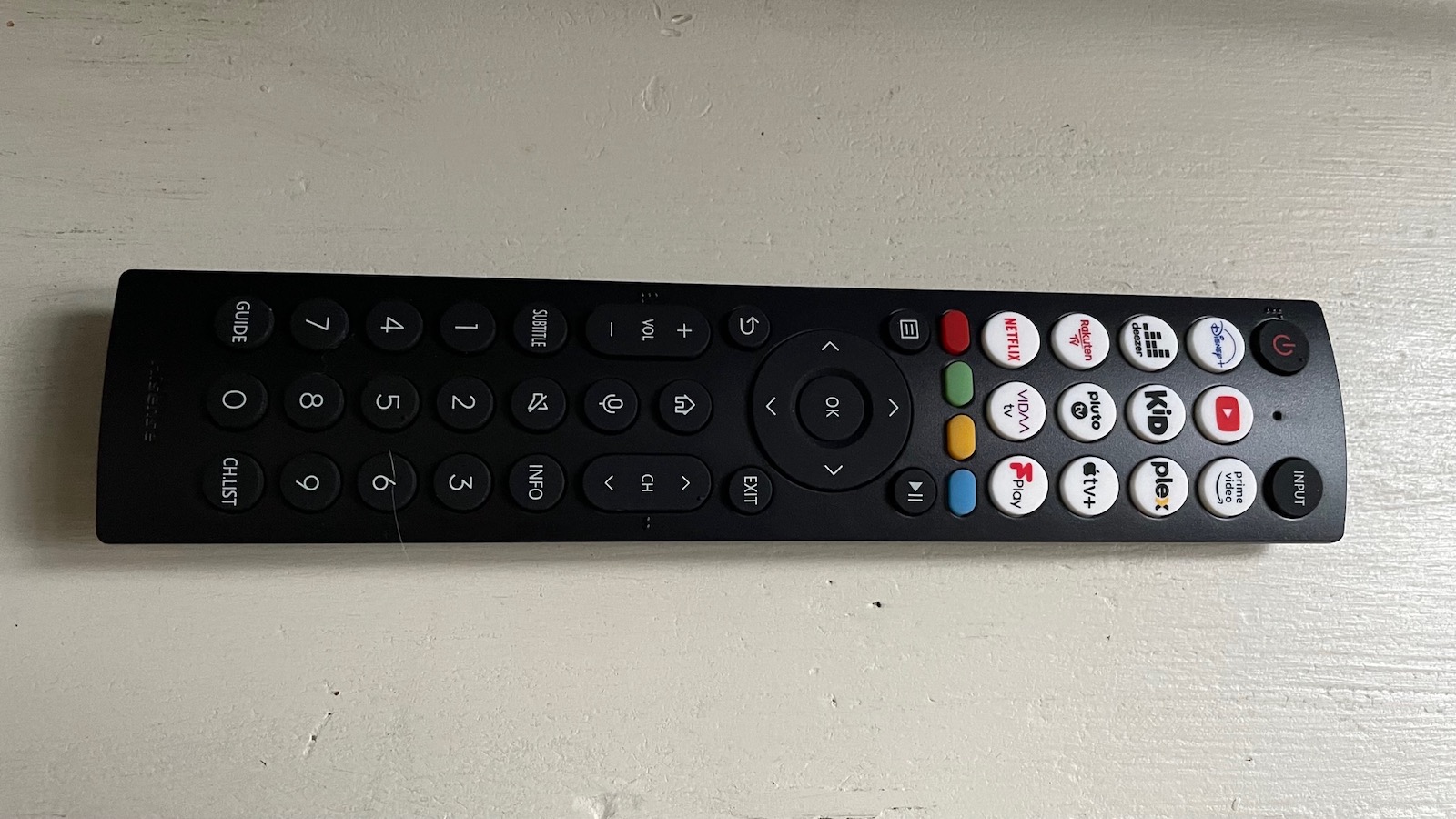
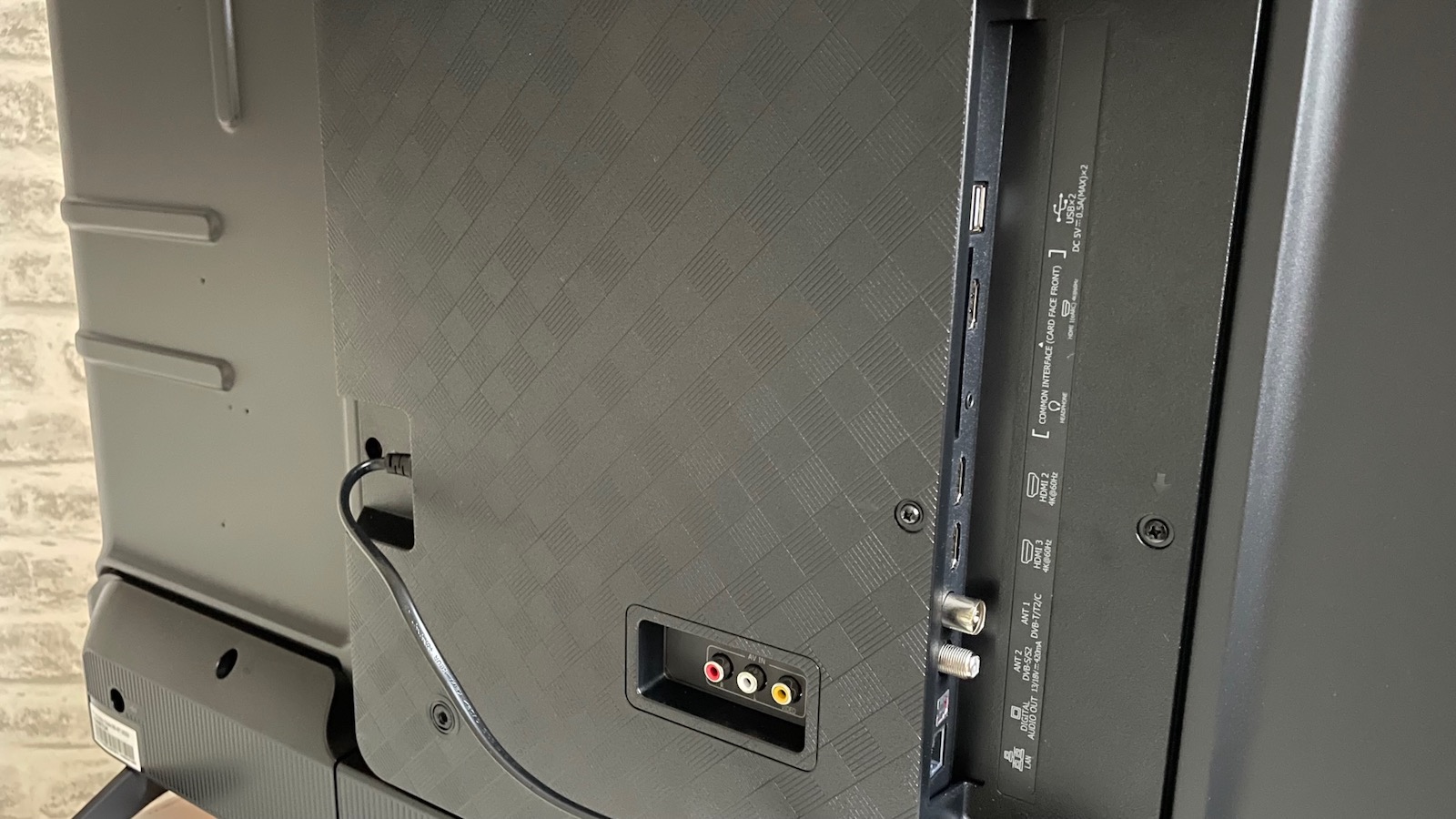
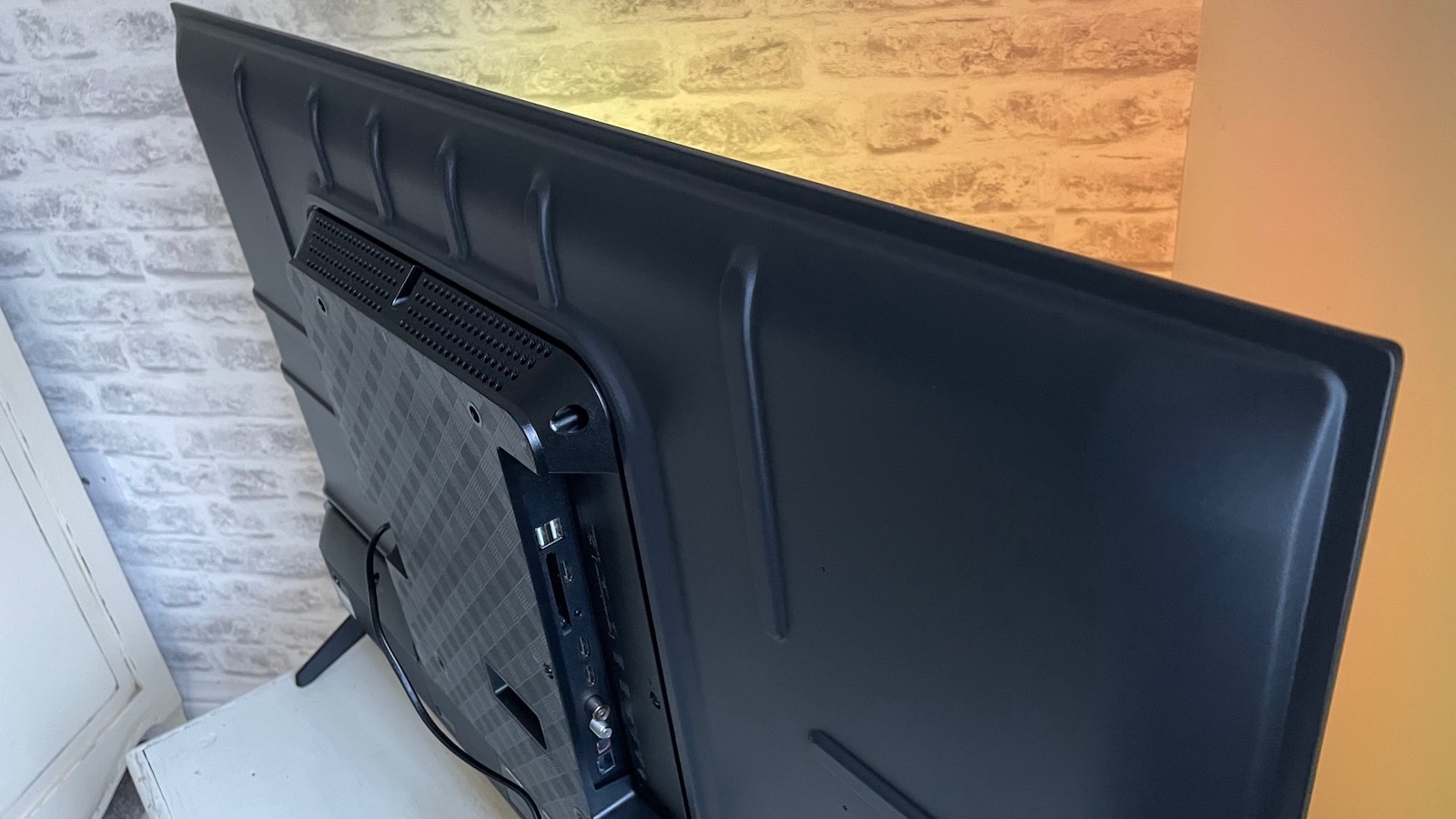

Specifications
Reasons to buy
Reasons to avoid
The 43-inch Hisense A6KTUK is here to prove that you don't even need to pay £500 to get a decent TV. In fact, you can get one for less than half that.
While no super-stylish OLED, this Hisense doesn't look as cheap as it is. It's got some surprisingly up-market specs, too, such as direct LED backlighting and support for Dolby Vision (as well as HDR10 and HLG). It also features the full-fat VIDAA smart platform, which is packed with apps and pleasant to use.
Cheap LCD TVs often suffer from inconsistent backlighting that, in the worst cases, manifests in nasty blotches or 'clouds' (check out our review of the rival Samsung UE43CU8000 for an example of that). Not the Hisense A6K though, which is really even-handed – at least when viewed straight-on.
A TV this cheap is never going to be capable of going super-bright, and in fact there's not much of a brightness difference when you switch from SDR to HDR content, but there's decent overall contrast, thanks largely to the surprisingly deep blacks that the set can reproduce. Colours are balanced and realistic, too, and plenty of shadow detail is revealed.
Inevitably, the Hisense isn't perfect, and images go a bit soft when motion is involved. Viewing angles are limited, too, so when viewing off-axis some mild backlight inconsistencies become visible. Still, for the money, this is a good picture performance.
Add decent sound that balances clarity and spaciousness fairly effectively (though lacks loudness and weight), and you've got a better overall package than really anyone has any right to expect at this sort of price.
Read our Hisense 43A6KTUK review
Best 32-inch
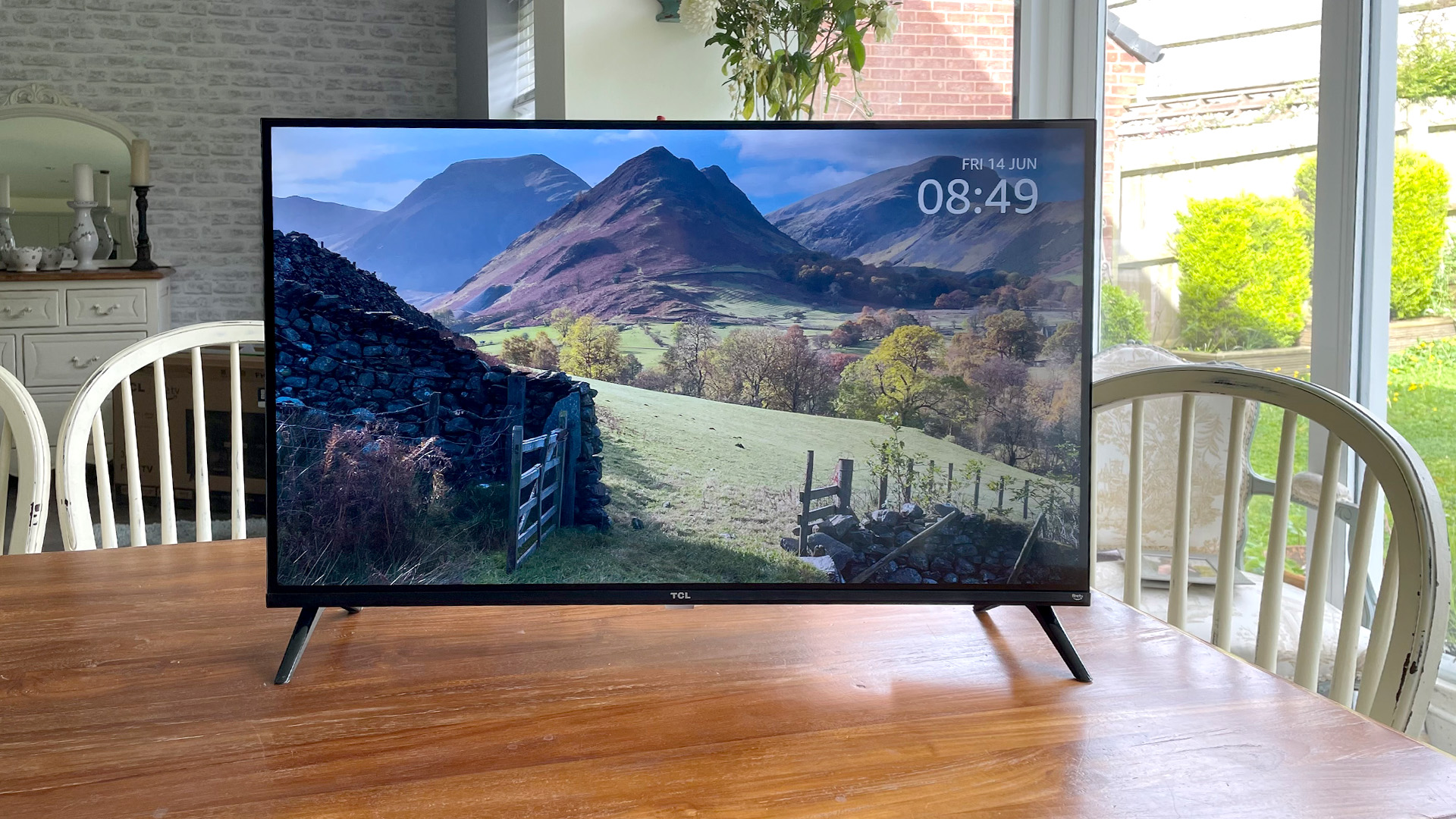
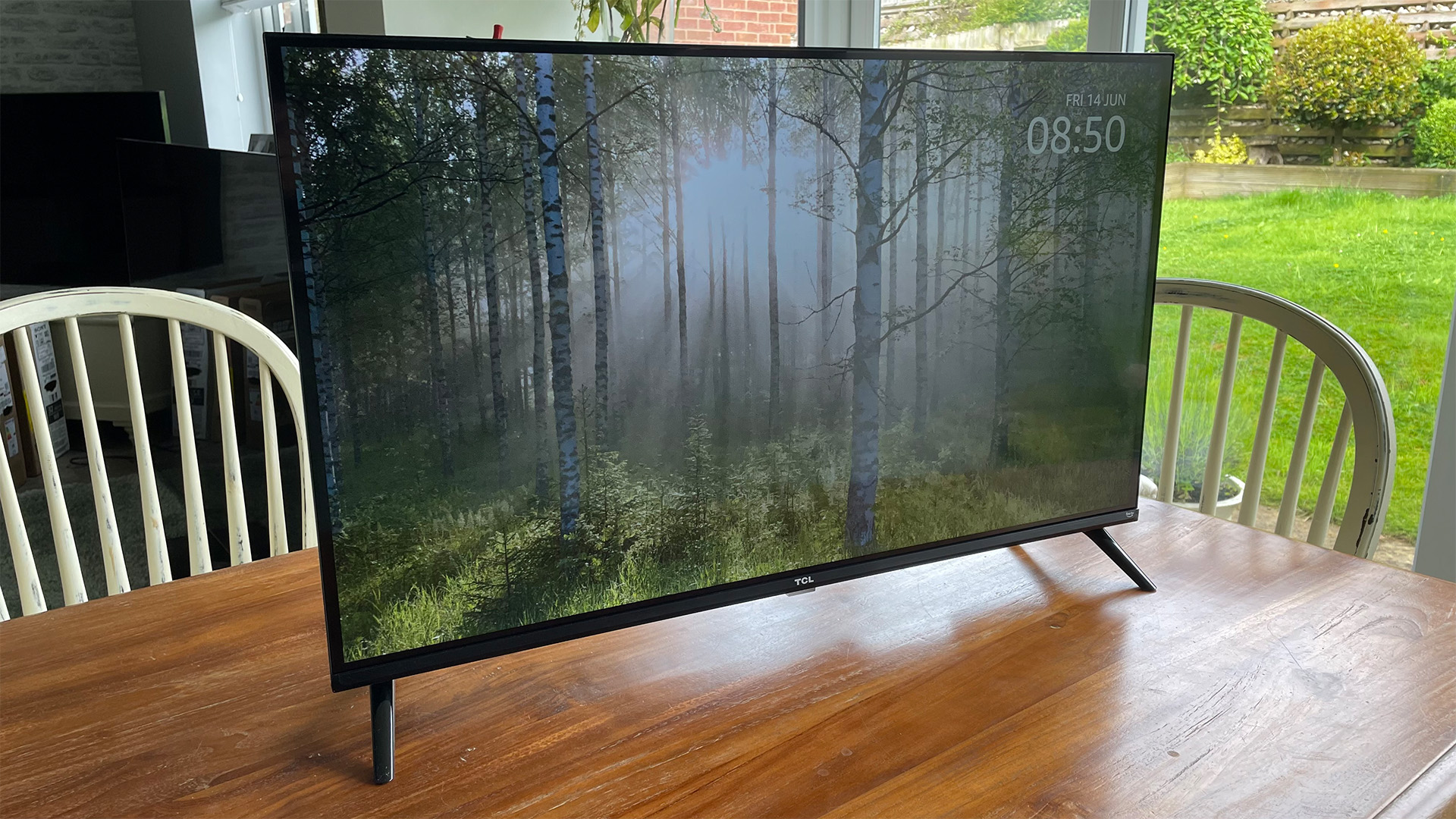
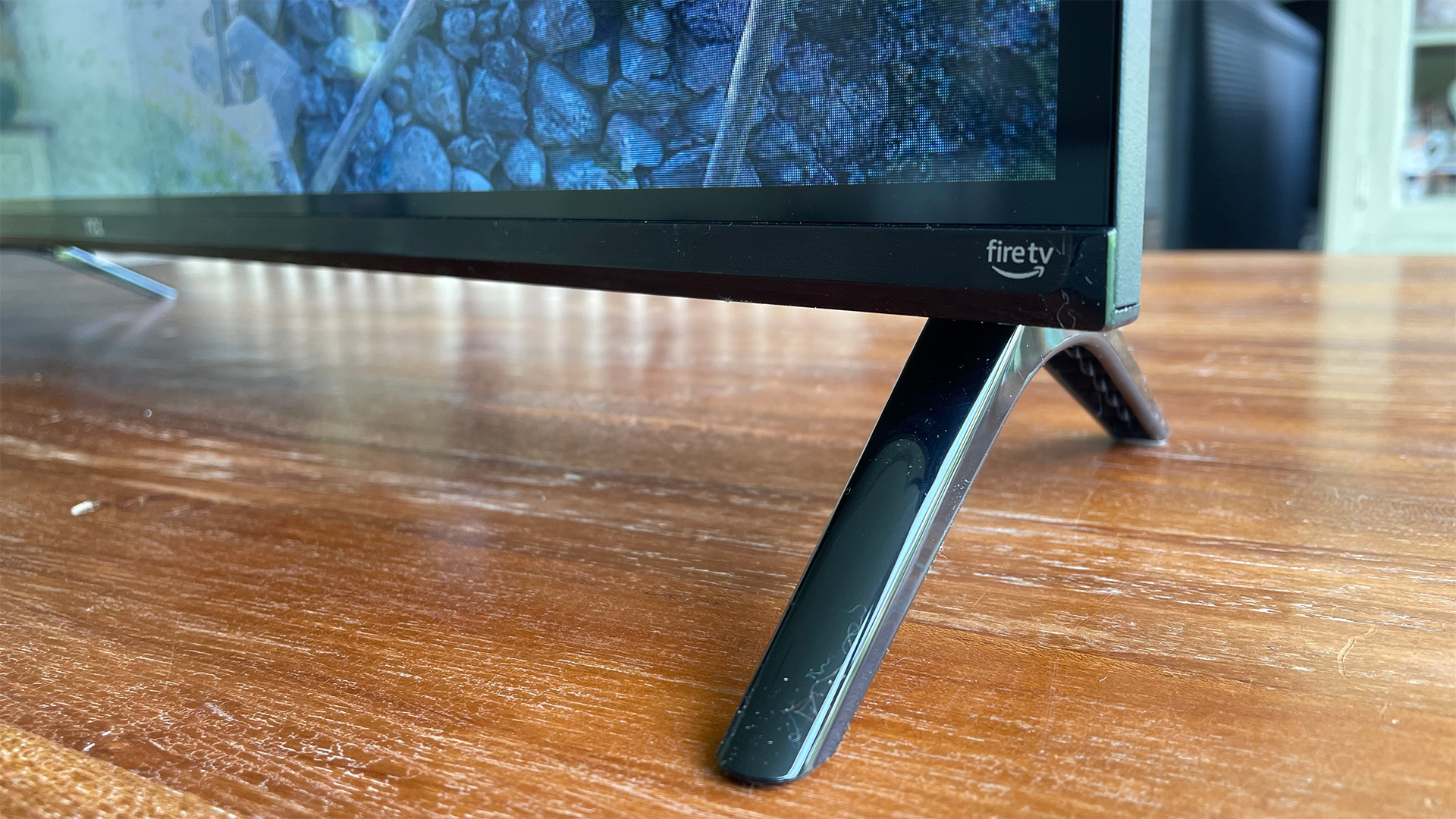
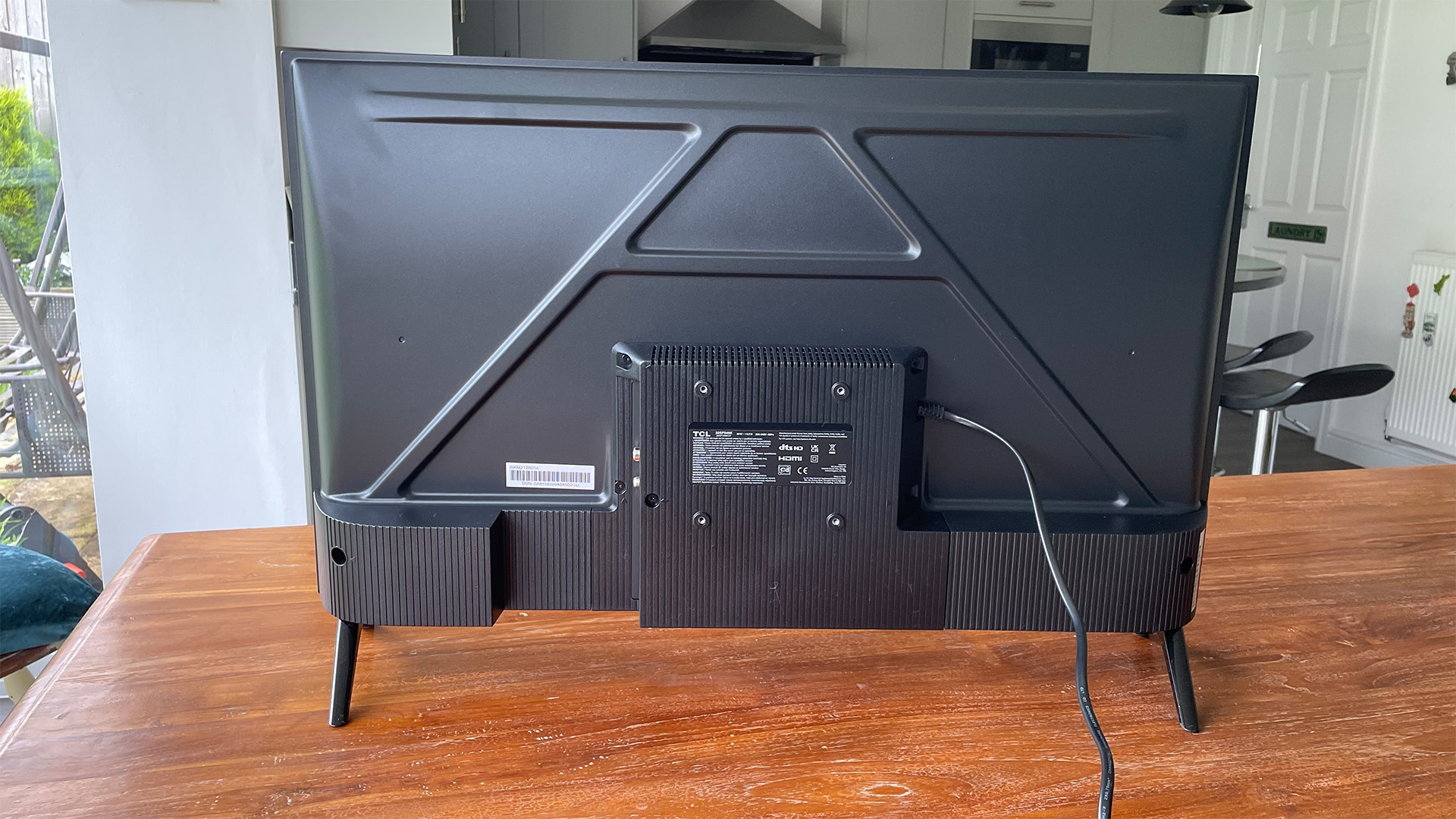
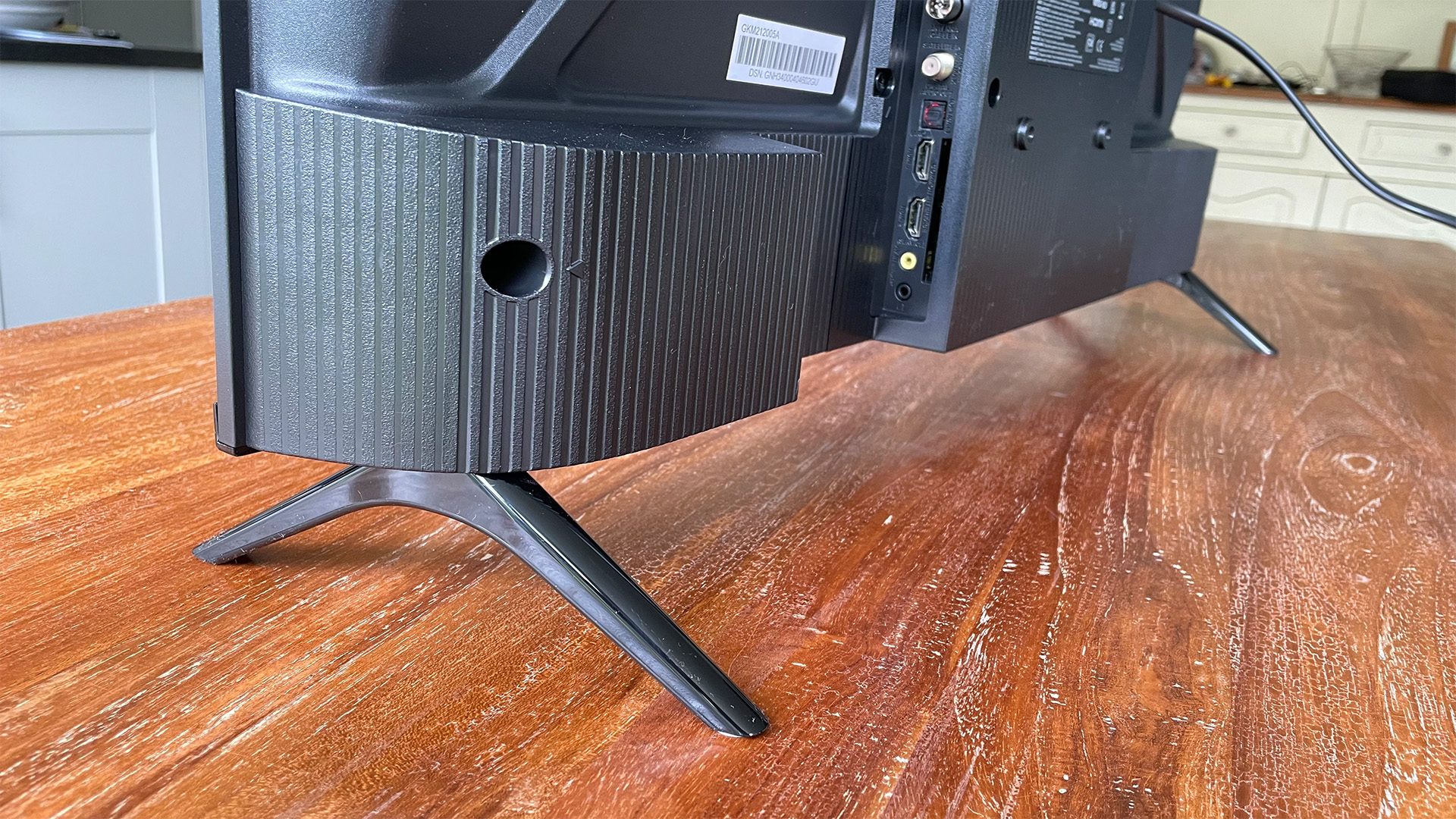
Specifications
Reasons to buy
Reasons to avoid
TCL TVs always manage to push the boundaries of what you can expect for your money. At just £149 it is easily cheaper than many rivals, undercutting Amazon’s 32-inch Fire TV 2-Series model and costing less than half of Sony’s KD-32W800 asking price.
While the TCL 32SF540K’s pictures aren’t as bright or as starkly contrasted as those provided by other comparable sets we've reviewed recently, this model manages to avoid any serious flaws and is a far more effective all-around performer.
The TV's on-board Fire TV operating system has some considerable advantages over Android/Google TV as it offers all the major UK-specific catch-up apps. There’s support for the HDR10 and HLG formats from both external sources and integrated apps, as well as playback of DTS Virtual X/DTS-HD and Dolby audio, though not Atmos.
The 32SF540K’s includes a pair of HDMI 1.4 ports, as TCL call them, which still support ALLM switching (good news for gamers) and HDMI eARC for passing multi-channel sound to soundbars or AVRs. There’s also an optical digital audio output, a 3.5mm AV input, a headphone jack and a single USB port. Alongside these physical connections, the TV can also connect wirelessly via Bluetooth 5.0, wi-fi, or Airplay 2.
Overall, the picture quality isn’t perfect here but this TCL achieves an enjoyable balance between all the main picture elements. On top of this, its Fire TV OS gives users a straightforward and stable interface to work with. The strengths on show outweigh the negatives, such as flimsy audio and build quality, making the 32SF5540 a very attractive proposition.
Read our TCL 32SF540K review
Best 24-inch
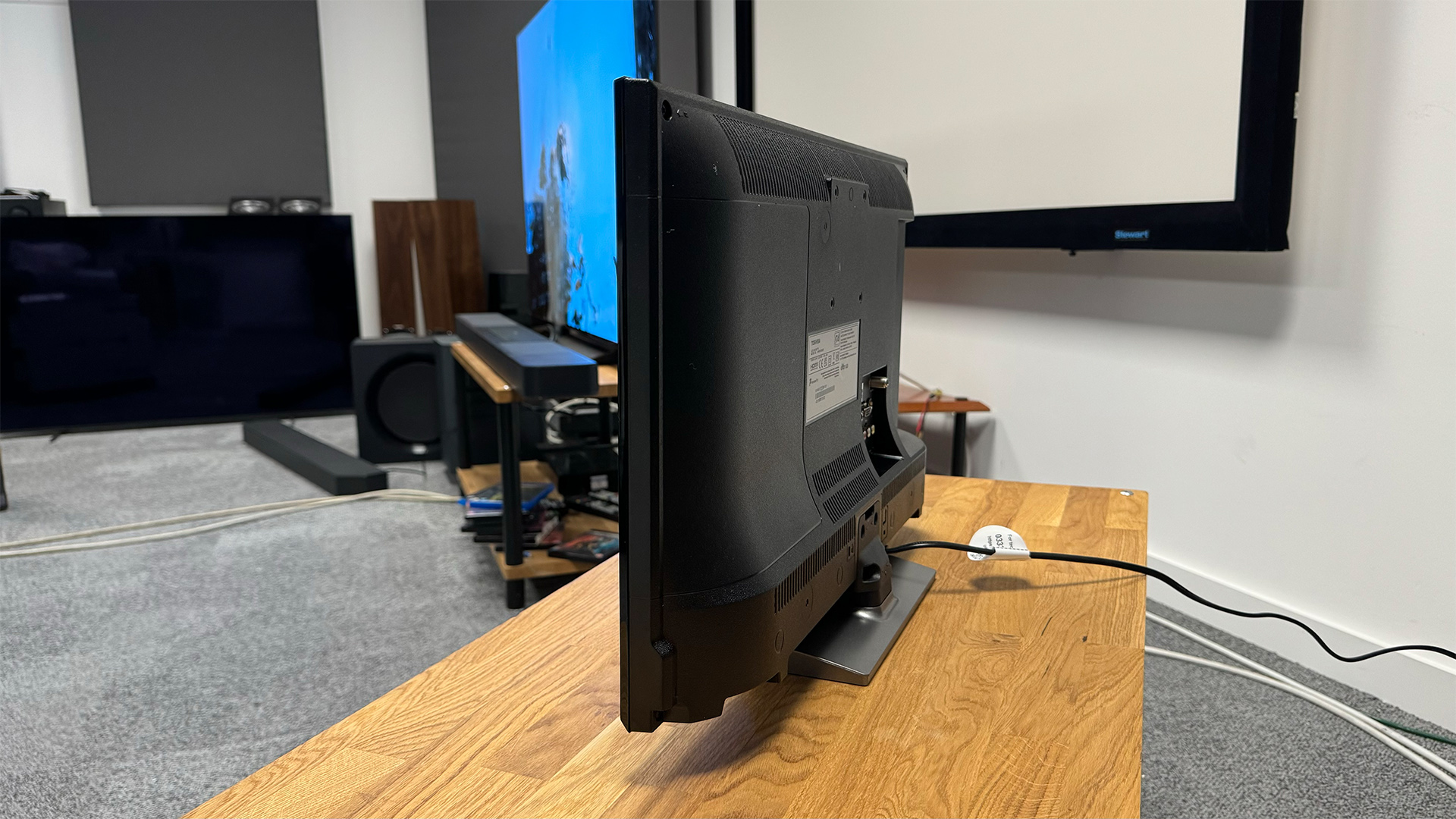
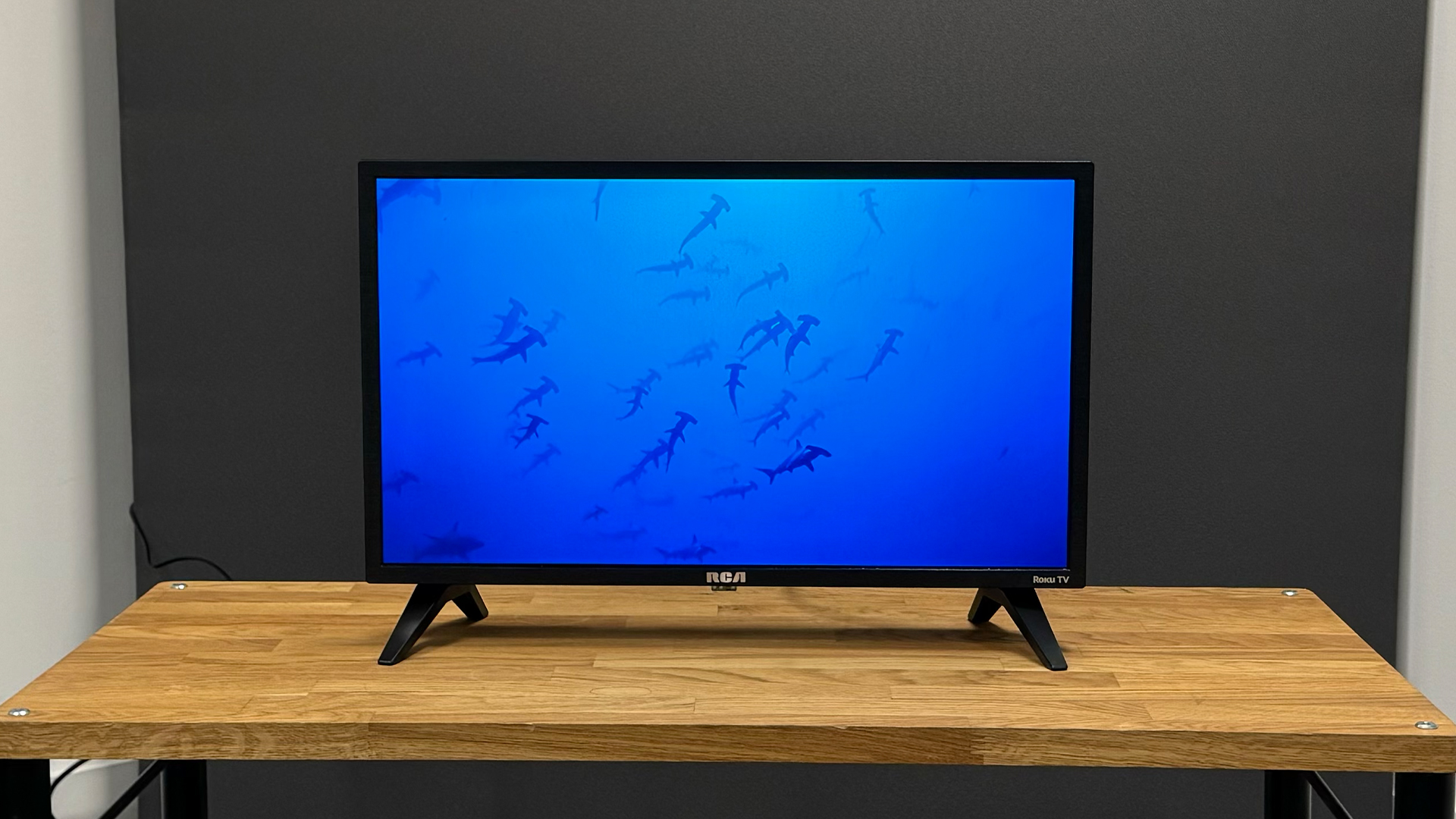
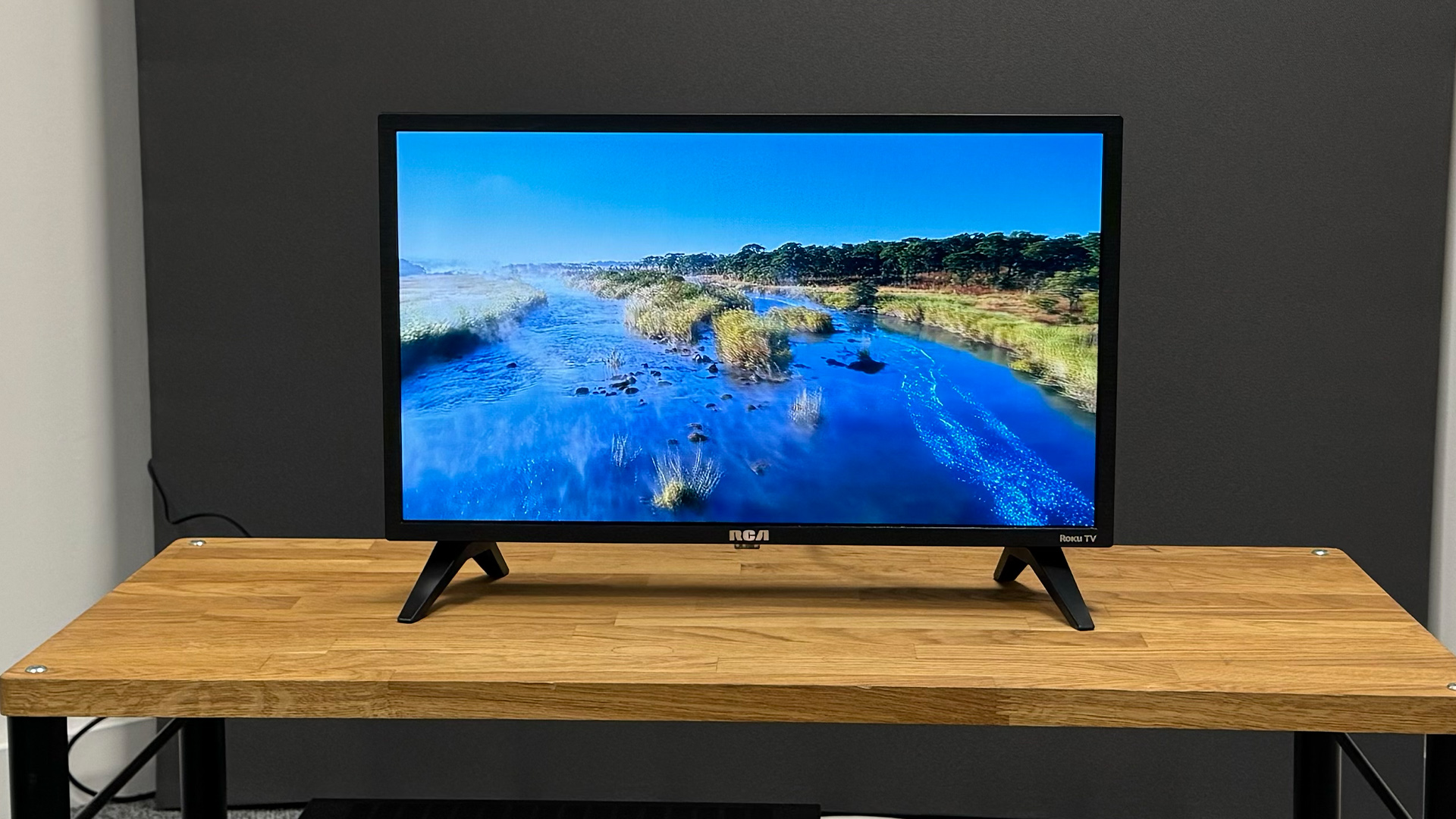
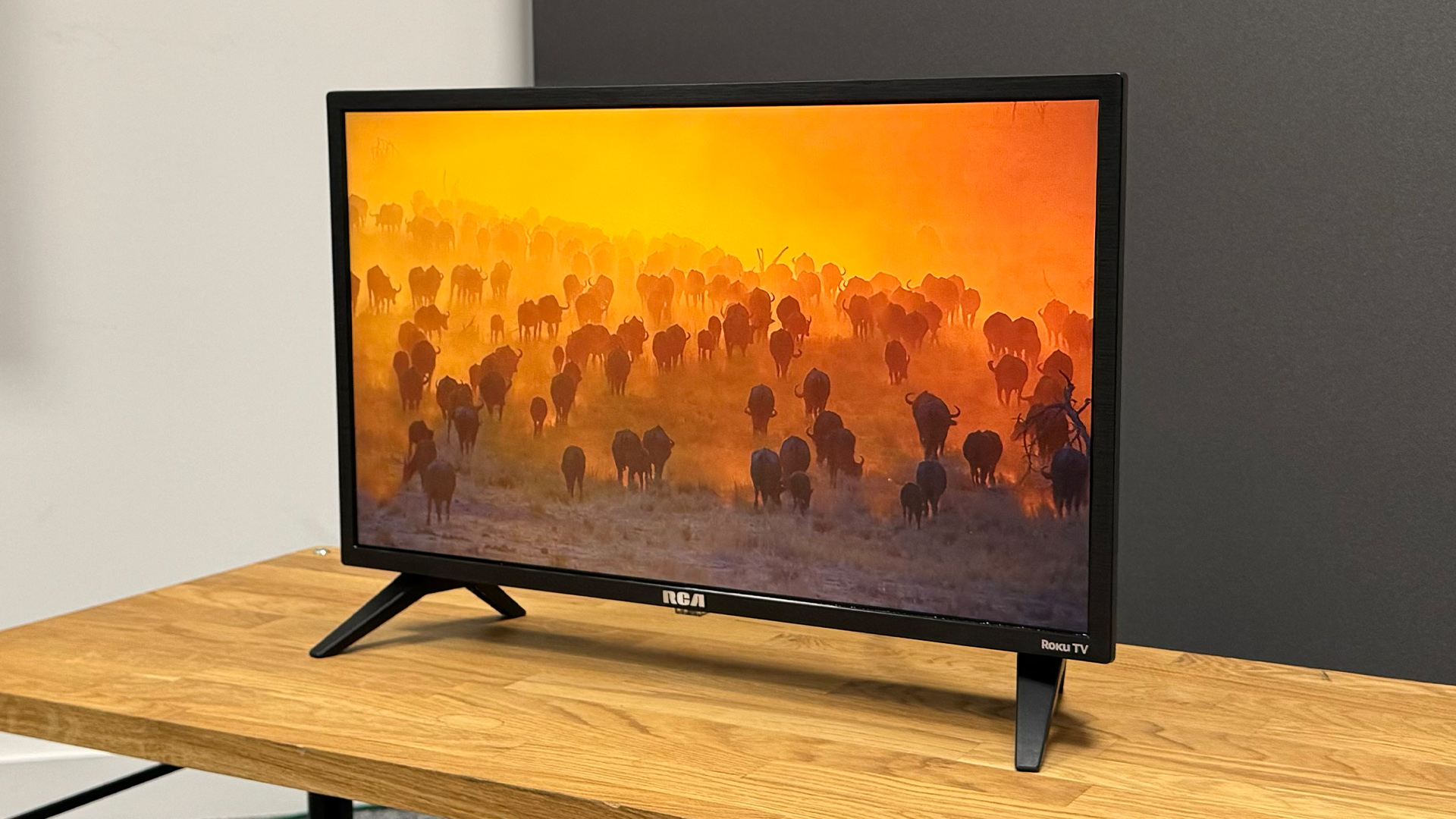
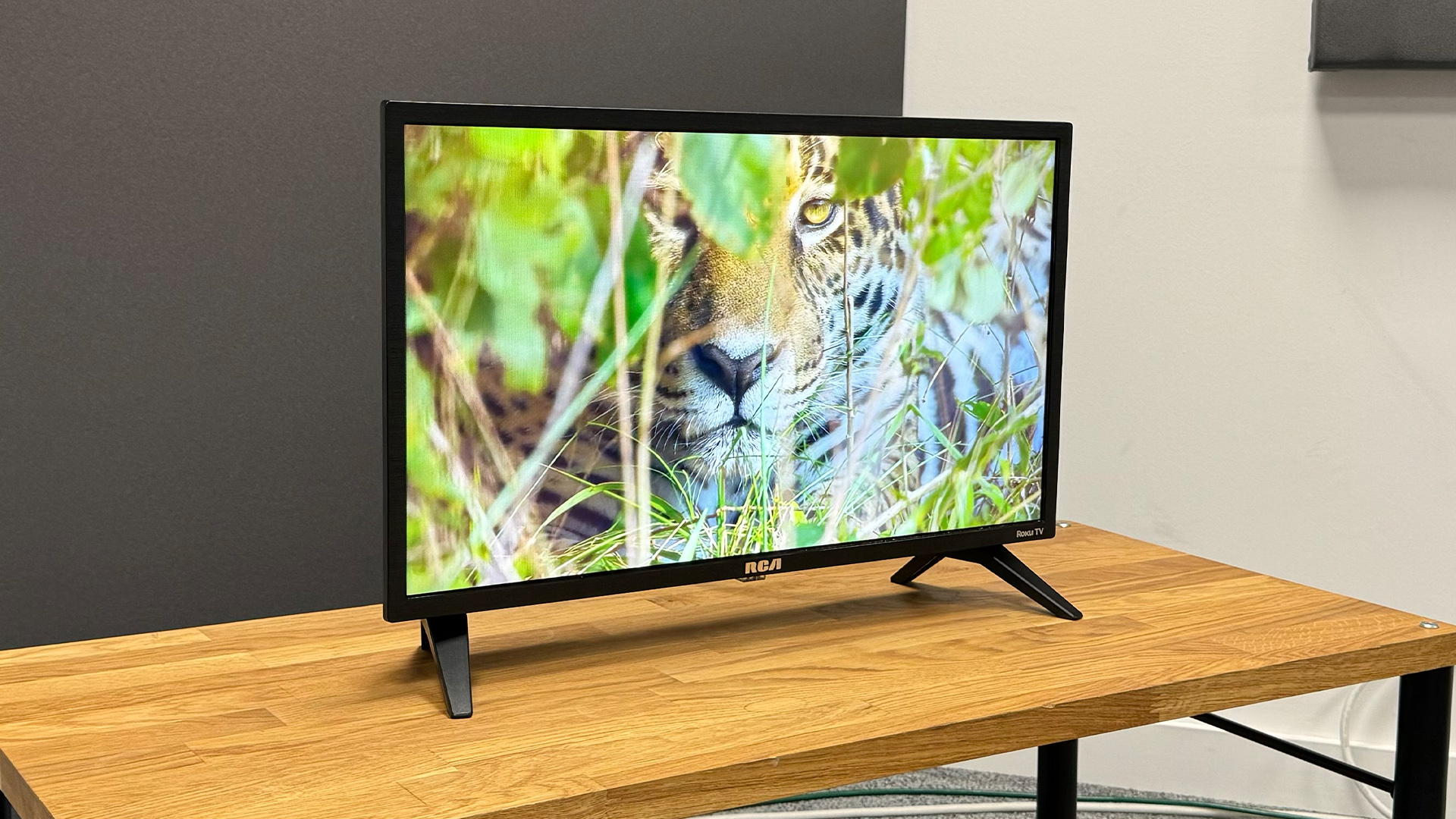
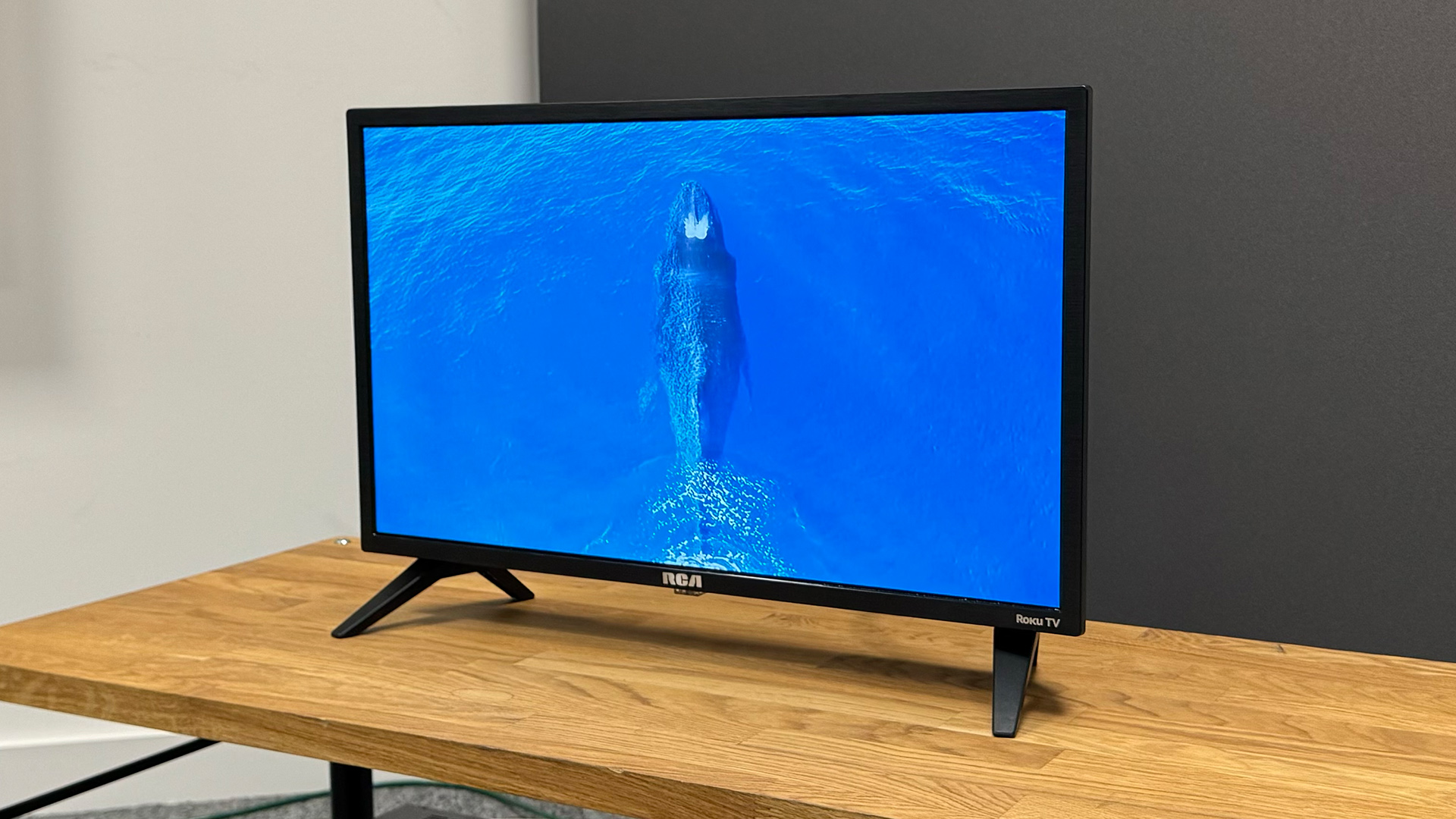
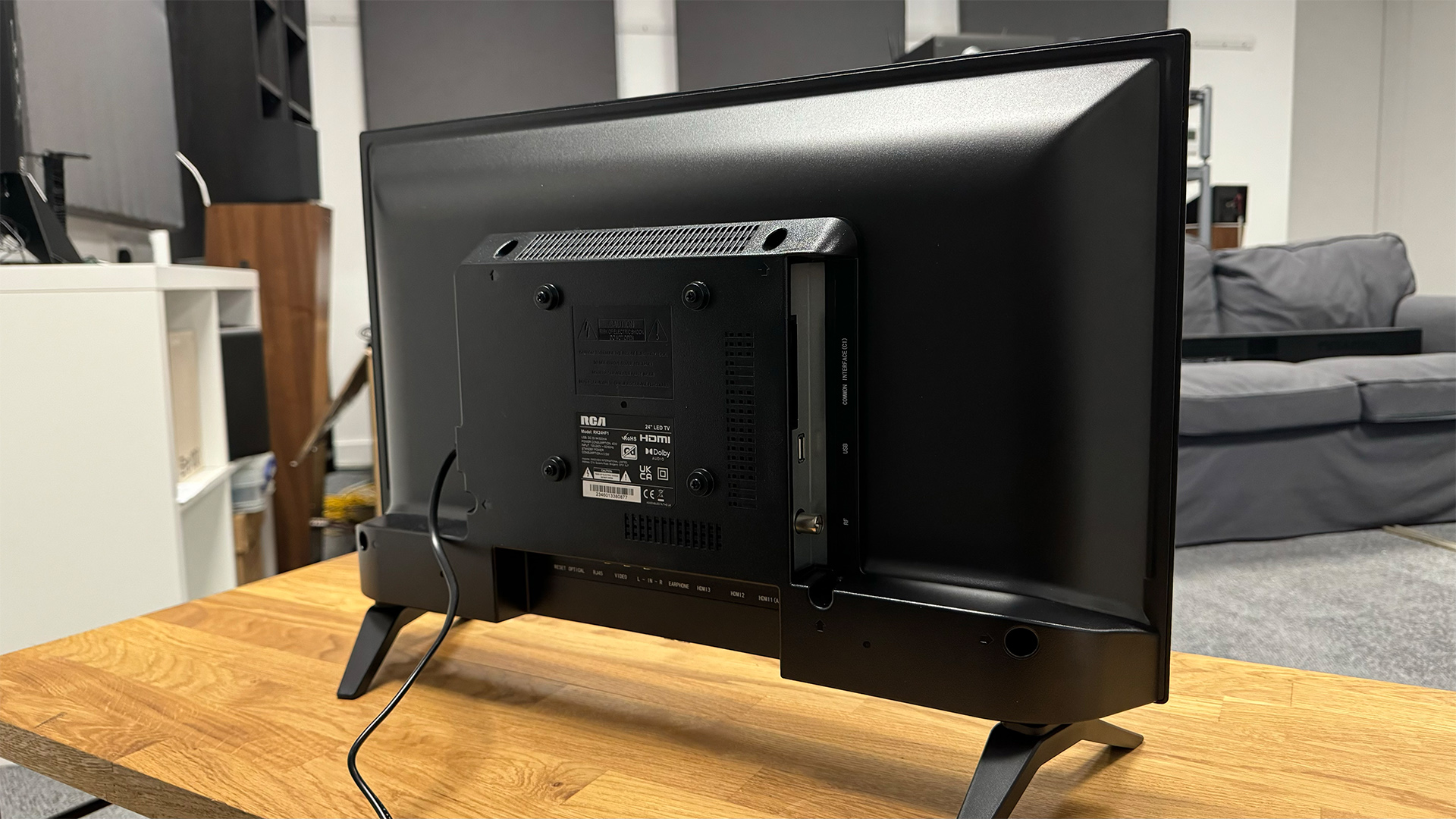
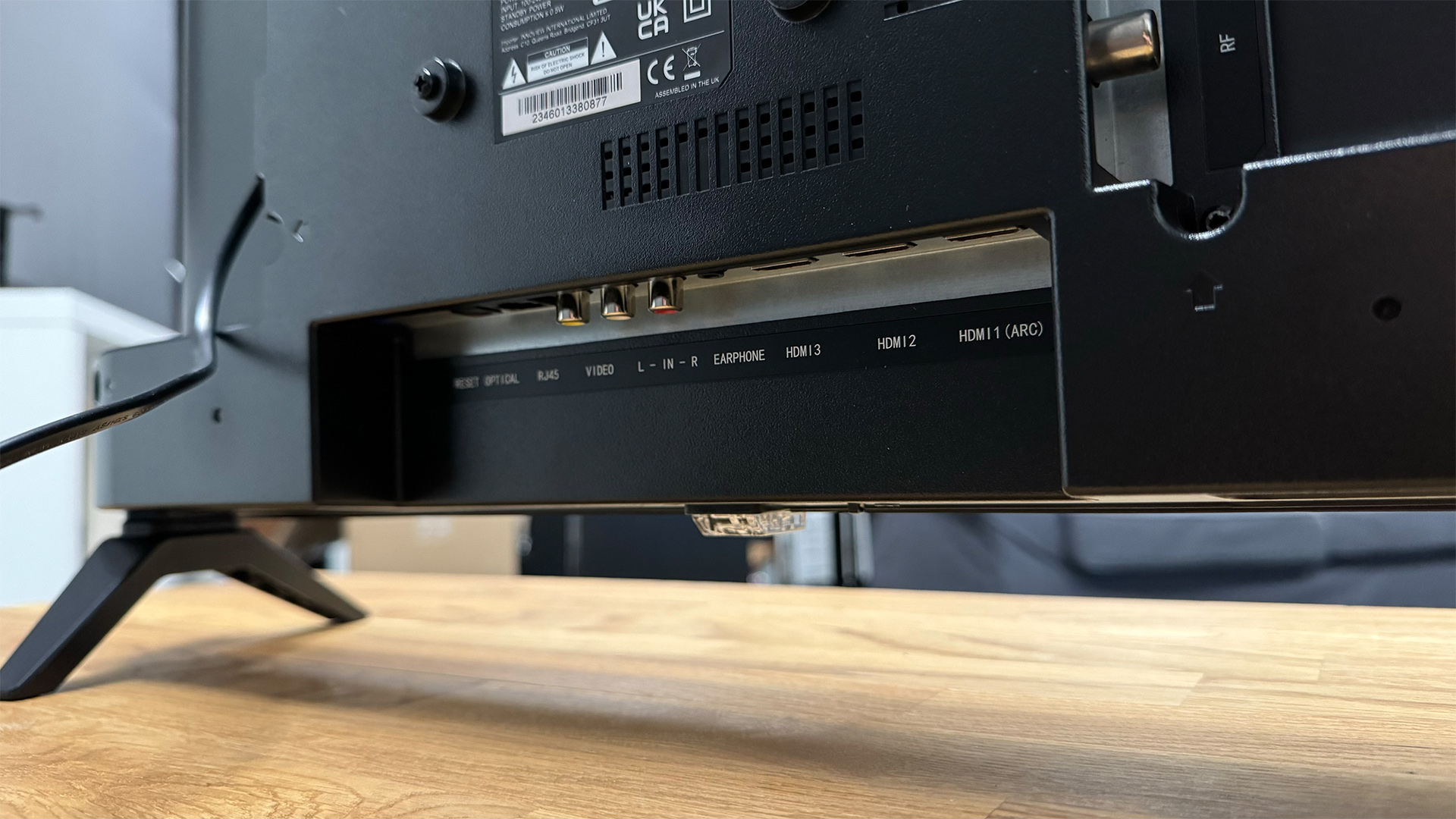
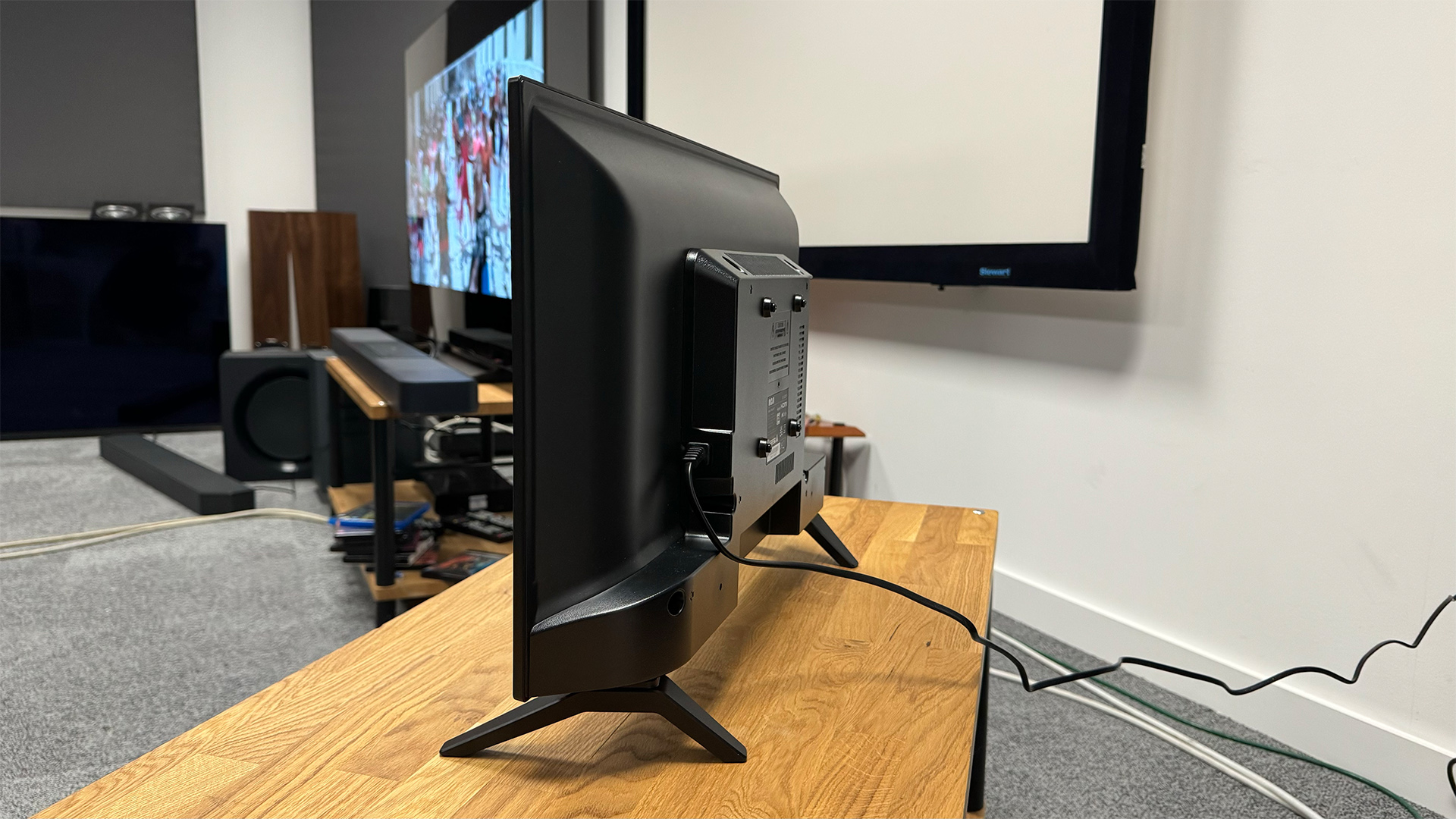
Specifications
Reasons to buy
Reasons to avoid
If you want an absolutely tiny TV for your kitchen or a smaller bedroom, where even 32-inches is a little too big, then we’d strongly recommend considering the 24-inch RCA Roku TV.
The tiny TV is fairly bare bones, featuring no HDR support and giant bezels. Its tiny speakers also undeniably struggle with even moderately challenging scenes, let alone our standard Blade Runner 2049 scene two, low-end stress test. But at this size, having tested as many 24-inch TVs as we could get our hands on we can safely confirm it’s the best you’ll get.
The Roku software means its got all the apps and smart features you’ll need for casual TV viewing while cooking or waiting to fall asleep. And despite its dinky dimensions and modest screen hardware the RC Roku TV is surprisingly bright and sharp, making casual Netflix viewing or catching up on the latest Bake Off episode a suitably pleasant experience. Hence our four star rating and conclusion:
“While its picture and sound are a touch too rough and ready to earn the RCA RK24HF1 Roku TV an unqualified recommendation, it picks its budget battles intelligently enough, with enough awareness of what most of its likely buyers will most want a 24-inch TV to do well. And this makes it, in the end, a much better bet than we’d expected it to be.”
Read our RCA Roku TV review
Also consider
- Bush UT24SB (50UT24SB): If the Amazon Fire Omni TV is too much and you want a 55-inch set, the Bush UT24SB is the best alternative we’ve tested if picture quality is your primary concern.
- LG B4: OLED TVs by their nature aren’t cheap – which is why there isn’t one on this list. But if you are determined to get one, the LG B4 has been known to drop down to just below £500 on occasion. Still, it's the cheapest OLED model we have tested and can wholeheartedly recommend at this price.
- TCL C745K: If you have a little extra budget and are willing to step up a price point then the TCL C745K is a fantastic entry-level, mid-range, Mini LED TV.
How we choose
Value for money is a key element we consider in our cheap TV buying advice. It holds more weight in this list than others on the site, given its focus on the affordable end of the TV market. We gauge this by comparing the TV with other sets in the same price bracket and creating a median gauge of what we expect it to deliver as a baseline in key areas.
Picture quality is the other main factor we consider, even when talking about cheap TVs. Though cheaper sets often come with performance compromises, including slightly grey black levels, less accurate colours and occasionally issues with backlight uniformity, we still expect them to offer a competitive, entertaining viewing experience.
Sound quality is another key area we check. TVs in general struggle to deliver audio on a par with a decent soundbar, let alone speaker system. If you see our best cheap soundbars guide you will see a selection of cost-effective options that can radically improve your movie watching experience, even when buying a cheap TV. But we still check every cheap TV’s speakers during our testing process, and expect them to deliver a listenable experience.
Features and gaming performance are the final big areas we check before recommending a cheap TV. First we check its app support to make sure it offers all the mainstream services most TV owners want – these include big name services such as Netflix as well as local streaming platforms, such as BBC iPlayer in our native UK. Then we look at connectivity, and gaming support. Most current-generation games consoles need an HDMI 2.1 connection to run all their features, so this is an important factor if you own a PS5 or Xbox Series X/S.
How we test
We test cheap TVs using a constantly evolving methodology we have spent over half a century developing.
As in all our reviews, we always do comparative testing. This means we always review TVs directly against rivals and similarly priced sets we think readers would also be considering, in controlled conditions. This lets us make direct performance comparisons based on our real-world experience running the sets against one another. We never rely on our testers’ memories when making performance comparisons between cheap TVs.
To further ensure accuracy, every TV we review is looked at and tested by multiple members of staff. We never publish a cheap TV review without at least two members of the team having looked at it and compared notes.
Using this methodology we test picture quality by setting the TVs up side-by-side and splitting the signal using our reference AVR. We then test the picture at various qualities and HDR standards using an ever-evolving library of test 4K Blu-rays and shows/movies on streaming services. We update the specific titles used to ensure we reference the latest movies and TV shows people are watching at the time.
We also tailor the movie choices to test specific aspects of the TV's picture quality. We may use a scene mastered at an atypically high nit count to check maximum brightness and contrast, for example. Similarly, we would then use a very dark scene to test shadow detail and black level.
We do the same when testing audio. For example, we would use a very bass-heavy scene with rhythmically complex audio to test a TV speaker’s low-end performance and to see if it is prone to common problems such as distortion – a problem we often encounter on cheap TVs that makes them sound horrible at even moderately high volumes.
We check app support by checking the TV’s store and running through a list of services we expect it to offer. We then install all the supported services and check that they run all the HDR standards, resolutions and audio formats they should.
To test gaming performance we test the TV with a current generation Xbox Series X plugged in. As well as checking support for things such as VRR, ALLM and HDR performance we also measure input lag. The latter is a key issue that impacts how reactive the TV is to incoming commands from a controller.
Latest updates
- Updated 3rd March 2025: Added updates to OLED section in FAQs.
- Updated 28th January 2025: Samsung replaced with TCL C745K after stock of the UE55CU8000 ran out.
- Updated 21st November 2024: TCL P755K and 24-inch RCA Roku TV added as entries.
- Updated 25th June 2024: TCL 32SF540K added as the 'best 32-inch' and Toshiba 24WK3C63DB added as the 'best 24-inch' models.
- Updated 24th April 2024: Updated with new intro and Amazon Fire TV Omni QLED copy to reflect changes in the industry and reference our experience comparing the TVs to new models we've reviewed. How we test and how we choose sections updated to include minor revisions to our review processes.
FAQ
Are you testing any new cheap TVs?
We tend to review cheap TVs in batches and base the ones we pick on a variety of factors. But to be considered the set needs to retail for around, but ideal less than £500 / $500 and be easily available to buy from mainstream retailers. We’re planning on getting a fresh batch in for review in the coming months to make sure our advice is as up to date and accurate as possible ahead of key shopping events, the nearest of which is Amazon Prime Day. If there’s a set you particularly want us to check out and add to our review pile, get in touch on social media, or using our shared whathifi@futurenet.com email address.
Are there any cheap OLED TVs?
OLED TVs are gradually coming down in price, especially if you’re willing to buy an older model. During sales events, including Prime Day and Black Friday we have seen top OLEDs drop in price by multiple hundreds. We even recently saw a big price drop on the LG B4 where it dipped to just below £500, but that was short-lived and quite the rarity. While we have not reviewed this specific model, we gave its predecessor the B3 a five star review.
Still, truly "cheap" OLEDs are few and far between. That’s why, despite their performance benefits, there isn’t any OLED currently available we can recommend in this best cheap TV guide.
Which brand makes the best cheap TVs?
The cheap TV market is currently incredibly competitive with multiple big-name and emergent brands vying for supremacy. Based on our testing, we recommend avoiding being too committed to one specific brand, as there are massive performance variations on a set-by-set and year-on-year basis. That means you can’t even trust one TV from the same brand’s line to perform comparably across all size points. This was most recently demonstrated by Amazon’s Fire TV Omni QLED line, where the smaller 43-inch model performed noticeably worse than its larger 50-inch sibling when we ran the two head to head. It’s better to do your research on the specific model you’re interested in than put all your faith in a brand.
Which cheap TV is best for gaming?
We currently recommend the larger sizes of the Amazon Fire TV Omni QLED for gamers on a strict budget. For the money, it has the most complete offering when it comes to connectivity, features and general picture quality. The 50-inch model retails for surprisingly little, is regularly on sale and comes with VRR and ALLM support across all four of its HDMI ports. The fact one of these is also eARC enabled means it is the only cheap TV on this list you can also send uncompressed Dolby Atmos audio through, making it a great choice for people with a compatible soundbar. The only downside is that, like all the cheap TVs we have tested, its panel goes up only to 60Hz. Many mid-range and flagship TVs now have faster 120Hz panels, that take full advantage of the PS5 and Xbox Series X/S increased graphical grunt.
Are cheap TVs good?
There are always fairly big performance disparities between cheap TVs. This is due to the lower specifications, less stringent quality assurance at a factory level and the like. This has always been the case since we started reviewing TVs. In recent years we have noticed the number of cheap TVs we consider “good” has been diminishing, which is why the majority of the sets in this guide are four, not five, star products.
Get the What Hi-Fi? Newsletter
The latest hi-fi, home cinema and tech news, reviews, buying advice and deals, direct to your inbox.
Tom Parsons has been writing about TV, AV and hi-fi products (not to mention plenty of other 'gadgets' and even cars) for over 15 years. He began his career as What Hi-Fi?'s Staff Writer and is now the TV and AV Editor. In between, he worked as Reviews Editor and then Deputy Editor at Stuff, and over the years has had his work featured in publications such as T3, The Telegraph and Louder. He's also appeared on BBC News, BBC World Service, BBC Radio 4 and Sky Swipe. In his spare time Tom is a runner and gamer.
- Alastair StevensonEditor in Chief
- Robyn Quick
